- Nye i dag ( 160 )
- Forhandler ( 4 262 )
- Privat ( 4 636 )
- Brukt båt ( 6 605 )
- Ny båt ( 2 293 )

Båten ligger i
- Norge ( 8 642 )
- Utlandet ( 217 )
- Bowrider ( 507 )
- Cabincruiser ( 1 483 )
- Daycruiser ( 1 535 )
- Gummibåt/Jolle ( 417 )
- Pilothouse ( 327 )
- RIB ( 777 )
- Seilbåt/Motorseiler ( 361 )
- Skjærgårdsjeep/Landstedsbåt ( 2 166 )
- Speedbåt ( 88 )
- Trebåt/Snekke ( 302 )
- Vannscooter ( 326 )
- Yacht ( 30 )
- Yrkesbåt/Sjark/Skøyte ( 374 )
- Andre ( 176 )
- Askeladden ( 338 )
- Buster ( 160 )
- Grand ( 198 )
- Ibiza ( 183 )
- Nordkapp ( 262 )
- Pioner ( 267 )
- SeaDoo ( 261 )
- Uttern ( 246 )
- Yamarin ( 337 )
- Andre ( 403 )
Motor inkludert
- Ja ( 7 707 )
- Nei ( 758 )
- Innenbords ( 3 023 )
- Utenbords ( 5 062 )
Byggemateriale
- Aluminium ( 644 )
- Glassfiber ( 5 546 )
- Plast ( 1 102 )
- Tre ( 179 )
- Annet ( 137 )
- Bensin ( 5 590 )
- Diesel ( 2 316 )
- Elektrisitet ( 20 )
- Gass ( 12 )
- Gass+bensin ( 4 )
Område i kart
- Agder ( 1 286 )
- Akershus ( 981 )
- Buskerud ( 448 )
- Finnmark ( 143 )
- Innlandet ( 231 )
- Møre og Romsdal ( 389 )
- Nordland ( 379 )
- Oslo ( 320 )
- Rogaland ( 771 )
- Svalbard ( 2 )
- Telemark ( 478 )
- Troms ( 234 )
- Trøndelag ( 530 )
- Vestfold ( 706 )
- Vestland ( 1 102 )
- Østfold ( 835 )
Sengeplasser
Sitteplasser, hestekrefter, båter til salgs.

Pent og lite brukt 12-fots SmartRIB selges

Micore 500 GT Med 60 hk Evinrude e-tec og nyere, solid henger! Høstpris!

Hel og fin Askeladden 475.

Svært velholdt Bavaria 38 Ocean - Senter-cockpit!

Yamarin 46SC 202 model Yamaha 50HK
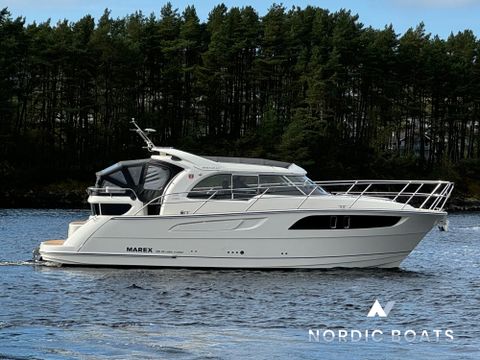
Norges mest omtalte akterkabin båt! - Marex 320 AFT - Svært strøken - Mye utstyr

Sting 535 PRO Med 50 HK Evinrude
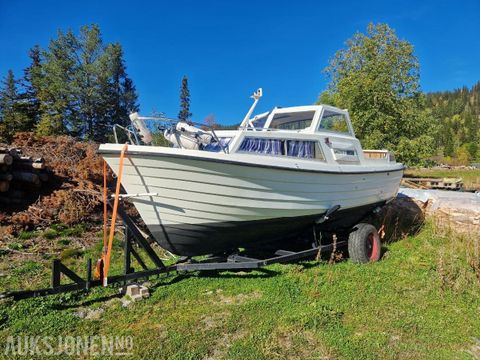
1978 Sandvik 25 AC med mercedes 40hk

YAMARIN 50BR PREMIUM EDIT. MED YAMAHA F60 -YAMARIN-Q/SOM NY/KUN 19 T/MYE UTSTYR
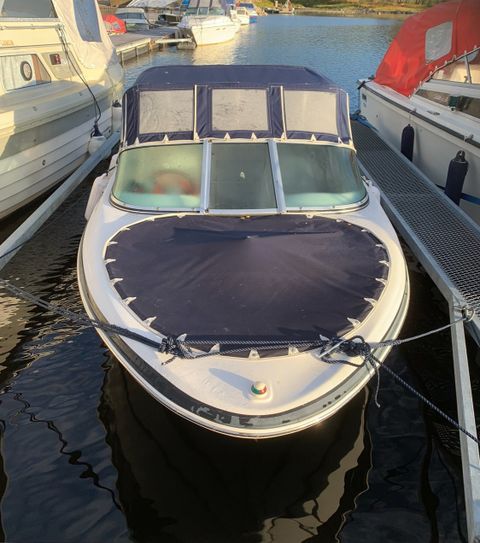
Bowrider Starcraft C Star 1600
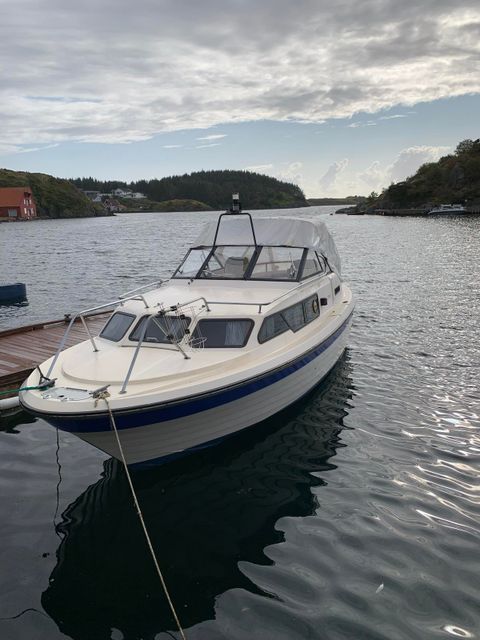
HØSTKUPP! - Sunseeker 24 Mexico - Med startvansker

Jeanneau 795 Cruiser V2 NY Motor 2024

Quicksilver 805 PH m/ Mercury V6 225 Hk - Finans - Innbytte
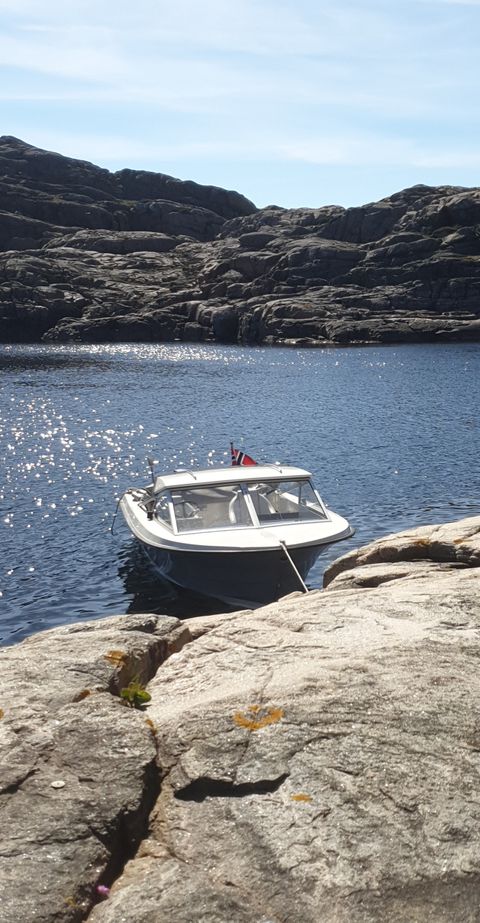
Wesling 16 HT m Evinrude 70 HK

Azimut 46 EVO - kommer for salg

Flott robåt med motor

Axopar 37 med 2x300 hk Yamaha

Selger min kjære «Colin Archer
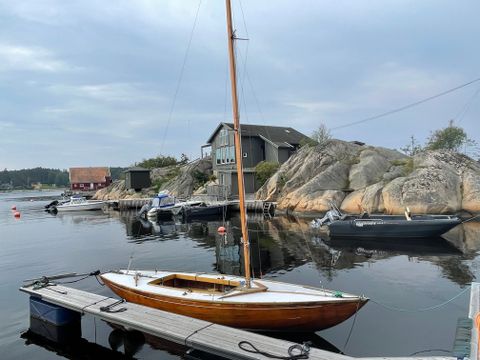
BB11 selges.

Delta 22fot combi bud mottas og må vekk

Bayliner Avanti 4085 - 42 fot - Velholdt - Mye utstyr - Strake aksler

Drago Fiesta 660 ,Daycruser kr.139000 høstpris

Valiant D-270 og Tohatsu 8hk totakt ink henger selges!

Fjord plast(bolt) 1965 (vinter-prosjekt)

Sea doo Gti 130 Kampanje-20.000.-

With viksund 385 Sport 25/32HK m/Elstart og registrert henger

Ibiza 811 Touring med nye Yamaha F350 Inkl. mye utstyr!

Windy 28 Ghibli - Et smykke av en båt - Ny motor m/garanti !
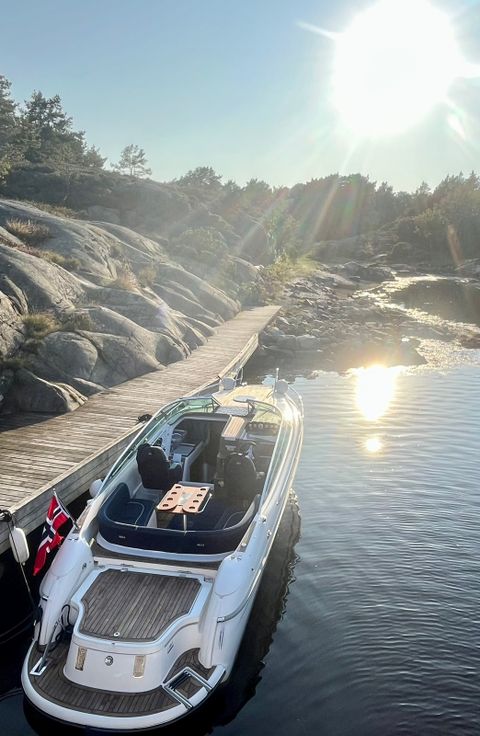
Fin Ibiza 28 Weekender til salgs

2011 Fairline Squadron 42 | VP D6 | Onan gen | Skipsregistrert | Meget velholdt
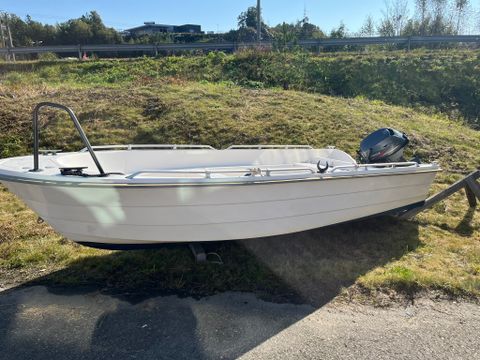
Fun 14 Selvlensende Yamaha 9,9 Sport

ROMSLIG OG STØDIG BÅT med vinterlagring

Høst pris Ryds 490 Vi S-line med Yamaha F60F og tilhenger!

Høst pris utstillings båten Ryds 630 VI MID C og tilhenger!

1985 Båt Skibsplast 600 vs 23 fot + Båtmotor Evinrude 150 hk. (Rep.objekt)
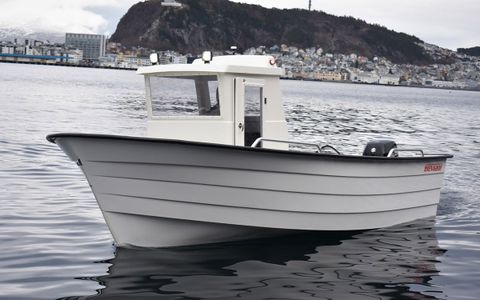
Øien 620FH! Øien- dager i Arendal! Garmin 7" med ekkolodd inkludert!

Høst pris på Ryds 650VI DC med Yamaha 150hk og tilhenger!

Velholdt daycruiser med teakdekk

Spækhugger Racing til salgs.

Albin Express selges grunnet lite bruk.

Skibsplast 655 Selected

Nordkapp Airborne 6.3 HL+ m/Mercury ProXS 150HK

Uttern 495HT Suzuki DF 40 med reg henger

Pen og velholdt Askeladden 14 til salgs

Joda 370sport

Nydelig Saga 315 med NY Volvo Penta D4-270

Uttern D57 m/Mercury 150hk/Kartplotter/stereo/Respo henger
- THE PRINCESS PASSPORT
- Email Newsletter
- Yacht Walkthroughs
- Destinations
- Electronics
- Boating Safety
- Ultimate Boating Giveaway

Boat Stabilization: Fins vs. Gyros
- Updated: September 4, 2018

Most owners want to reduce the motion that makes people seasick on their boat, and many have heard about stabilization systems provided by fin stabilizers and gyros. But which is better? And specifically, how do advanced curved-fin systems like Side-Power Vector Fins match up with the most popular gyro systems? Let’s start with the basics and go from there.
Both Vector Fins and gyro systems work well at anchor, assuming you’ve sized the equipment properly. Underway, Vector Fins are usually superior to a gyro because
- the power of the fins increases exponentially with speed;
- the fins can maintain anti-roll force indefinitely while the gyro relies on precession (change in the angle of the gyro’s axis; once the gyro reaches the end of its stroke (or “throw”), the gyro loses its ability to stabilize;
- the fins will also correct list against a steady crosswind while the gyro will quickly run out of precession;
- Vector fins generate significant lift at speed which improves speed and fuel economy over straight fins,
- when a boat goes into a turn, a gyro or straight-fin system will try to keep it level, while the Vector fin system recognizes the difference between a roll and a turn, and banks the boat into the turn to resist the centrifugal force generated. It’s the same sort of effect a banked turn on a race track creates. As a result, with Vector Fins, one barely notices that the boat is turning, and glasses and plates stay put, rather than slide off the table.
Advantages of gyros are that they have no appendage, they are relatively small and compact, and they are well-engineered to minimize the intense heat generated on the bearings by the spinning mass. Gyros come in an attractive package and work well in many circumstances.
Disadvantages of the gyro systems are that they are less effective underway, are heavy, and in some cases, servicing requires removing the unit from the boat. For a 30-knot boat, a gyro must be much bigger–perhaps bigger than space allows–to equal Vector Fins’ performance, so sometimes multiple gyros will be installed. The systems can take up to an hour to “spin up” before they provide full stabilization, also generate noise, may require structural reinforcement, and with few exceptions are wholly dependent on AC power off a generator. In certain sea conditions, their effectiveness is also limited by stroke or precession distance, and when it’s time to replace the main bearings, most gyros must be removed from the boat and returned to the factory for service.
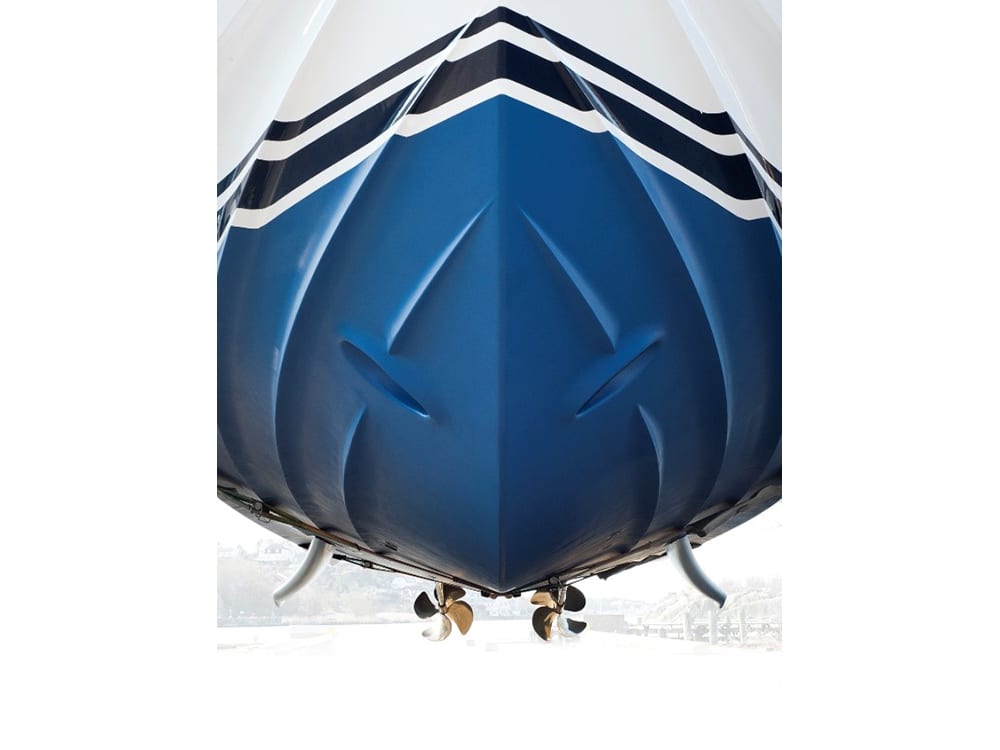
Advantages of Vector Fin stabilizers include the fact that their power increases with speed exponentially and that they generate lift as well as stability, which negates the effect of drag (unlike straight fins). Vector Fins also provide both at-rest and underway stabilization, allow you to bank into turns, and reduce unwanted motions of sway and yaw by up to 30 to 50 percent compared to straight fins. They counteract crosswinds and list, are lighter than gyros by thousands of pounds (depending on size) and allow maintenance of bearings and cylinders to be done in place. Those using hydraulic power can typically use a PTO (power take-off) hydraulic pump on the boat’s engine to get free power underway (it uses AC from a genset or shorepower at rest). An accumulator in the system means less noise and instant response. In fact, the system is virtually silent. The stabilizing force of Vector Fins is directed more vertically than straight fins, increasing efficiency and lift; you can therefore use smaller fins for the same power or larger fins to gain 30 to 50 percent more power than straight fins.
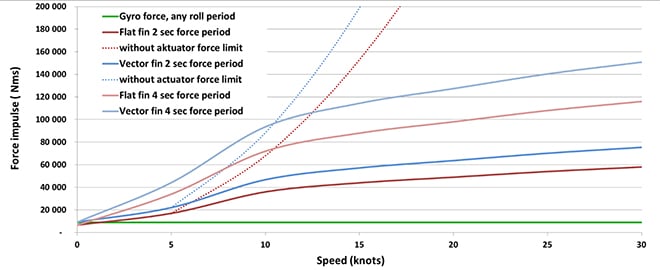
Disadvantages of all fins include the fact that they are appendages and can therefore cause entanglement or be damaged. They create drag, which may be offset by gains in fuel efficiency and speed in the case of Vector Fins. They can also cause sway and yaw, and at anchor they are limited by the length of the fin’s stroke. Also, they need to be positioned roughly in middle of boat so when retrofitting an older boat this may sometimes pose a challenge. Their location also requires ample structure and support for the loads generated. Having said that, a gyro similarly requires significant structural reinforcement and presents similar space challenges.
From a cost standpoint, a detailed analysis of expectations, requirements, and each boat’s suitability should be undertaken by the installer doing the work, but all else being equal, Vector Fins may be equal to or possibly a little less than a gyro installation. There are many factors that will dictate higher and lower costs—for example structural refits needed to add a gyro sometimes make a big difference. Another factor is whether there is space to install either system, and/or what existing equipment will need to be moved in order to create the space for a gyro or fin system.
One of the greatest variables in any stabilization decision is the owner’s expectations. What’s most important? Stabilization at any speed, or optimizing for at-rest performance? If at-rest stabilization is the priority, a smaller gyro will cost less than one that is two or three times the size, which may be what is required for any-speed stabilization. For any-speed stabilization, the equipment cost of a Vector Fin system would be significantly less than a gyro system. We know of boats on which a second and even a third gyro have been added to get satisfactory stabilization; for these boats, a Side-Power Vector fin system would have cost far less.
- More: Electronics , Imtra , Sponsored
- More Electronics
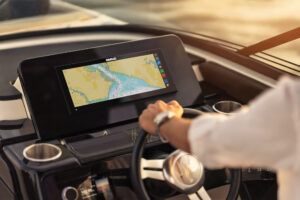
Simrad Unveils Game-Changing NSX Ultrawide Displays

Smarter Boating Ahead: AI Tech Enhances Onboard Cameras

KVH Expands Its Hybrid Network with OneWeb’s LEO Satellites
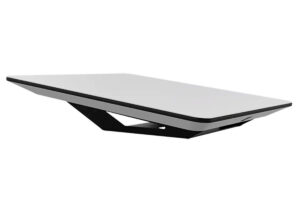
KVH Expands Starlink Maritime Options
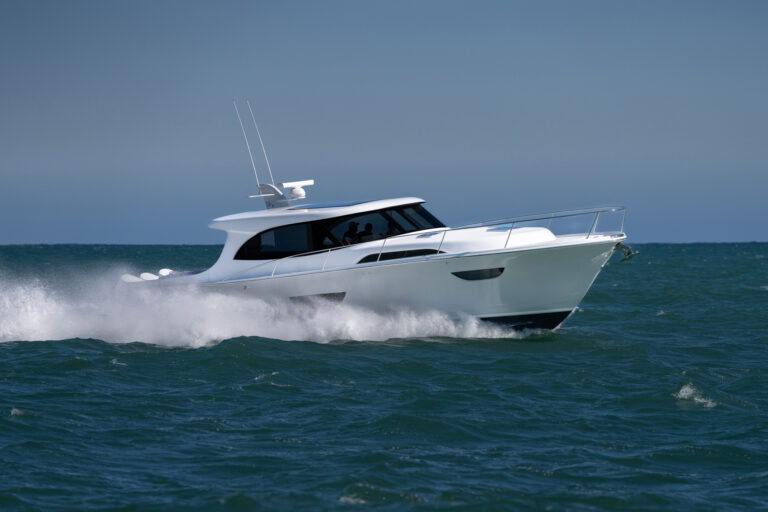
A Standout New Brand
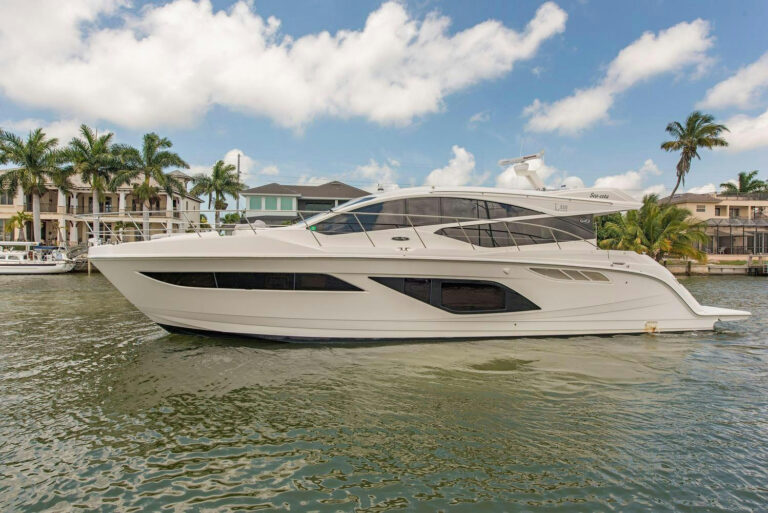
Low-Hour Cruiser: Sea Ray L550 For Sale
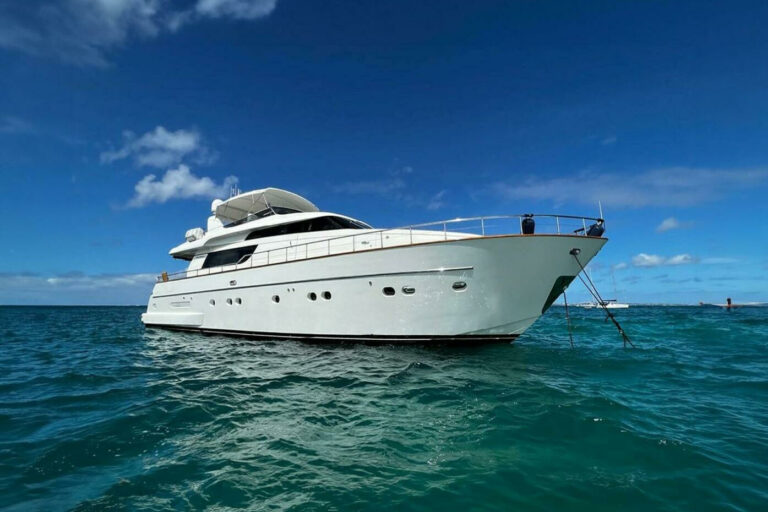
Caribbean Cruiser: Sanlorenzo SL72 For Sale
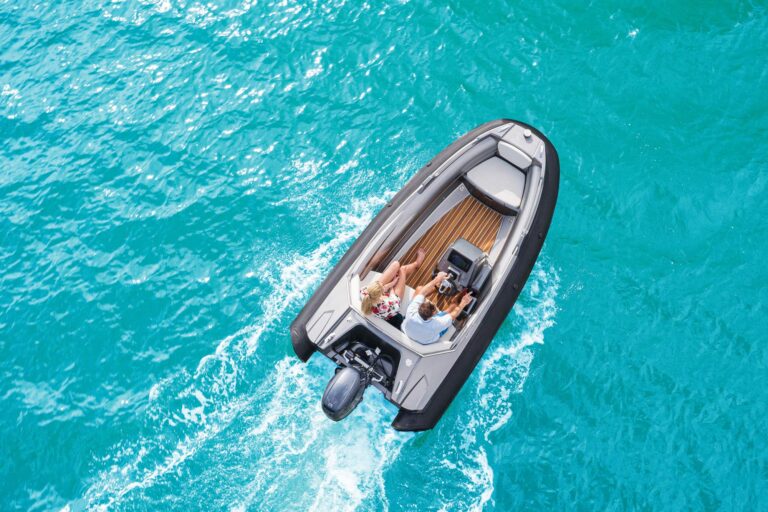
Customize Your Ride: The Argos Nautic GT14 RIB Tender

- Digital Edition
- Customer Service
- Privacy Policy
- Terms of Use
- Email Newsletters
- Cruising World
- Sailing World
- Salt Water Sportsman
- Sport Fishing
- Wakeboarding

- Career Advice
- Salary Guide
- Digital Dockwalk
What’s New in Superyacht Stabilization?

Louisa Beckett is the former editor of Motor Boating, ShowBoats International, and Southern Boating magazines, and a longtime contributor to Dockwalk. Over her career, she has written about a wide variety of vessels ranging from Sea-Doos to superyachts, and has had many adventures on the water, including riding in a U.S. Coast Guard “rollover” boat in heavy surf off Cape Disappointment, Washington.
Louisa Beckett explores the latest trends in yacht stabilization systems, from electric actuators to combo installations.
While the yacht stabilization industry continues to roll out technological advances to help counter “the motion of the ocean” each year, the biggest trend over the past decade or so has been just how crucial the stabilization system has become to yacht owners to assure their comfort on board. Today, stabilizers rank right up there with a motor yacht’s engines when it comes to essential equipment.
“I really believe that people pay a lot more attention to the stabilizers now than they did years ago [when] they ‘ticked the box’ and said, ‘We’ve got the stabilizers going in,’” commented John Allen, Quantum Marine Stabilizers founder and president. “Nowadays, there’s not a boat under 90 meters that is not having a proper model test [for] the stabilizers in a model tank in advance of the construction of the boat, and there are discussions backward and forwards between the client and the shipyard about what the performance should be, and how comfortable the owner will be…. In fact, I was just talking to a shipyard we do business with, and they told me that the stabilizer is the most important piece of equipment on the boat right now.”
“The buying public is becoming more and more aware of what [a stabilization system] can do for them and their boating experience,” says Sean Berrie, CEO of Humphree USA . “It’s coming now that at 80 feet and above, you can’t sell a boat without it.”
With so many innovative new gyros, interceptors, and fin stabilizers available for a wider variety of yacht sizes and types than ever before, many owners also are including a stabilizer upgrade as part of their yacht’s next yard period or refit. “We get a lot of people who want to add an interceptor who have gyros on board. And then some, on the bigger scale, that want to add a full system from us,” Berrie says. “They have gyros, and they want to add fins and interceptors because they want to be covered.”
Here’s a look at what’s new in the yacht stabilization market today.
Gyro stabilizer technology utilizes a flywheel spinning at high rpm to generate angular momentum, creating anti-rolling torque within a vessel’s hull. Gyros offer the advantage of reducing a yacht’s roll without requiring any fins or other appendages protruding from the vessel, potentially creating drag while underway. They typically are compact, operate on electric power, and don’t require hydraulic lines installed on board. The “sweet spot” for most gyro stabilization systems is when the boat is stopped, at anchor, or operating at low speeds.
A relatively new technology when compared with fin stabilizers, gyros were first popularized in the yachting marketplace about 15 years ago when the Ferretti Group began offering Mitsubishi’s Anti Rolling Gyros (ARG) in some of its yacht models. Now manufactured by Tohmei in Japan, there are four ARG models available today, ranging up to the 375T, which is suitable for installation in megayachts.
“We have them on a 180-foot Benetti – four 375Ts,” says Steve Gilchrist, president of Coastal Offshore X-cellence , an ARG dealer in Fort Lauderdale. He adds that the Roll-Reduction Simulation Program Mitsubishi developed for the ARG line helps his shop to determine the size and number of gyros needed to stabilize a particular hull. “It tells you which models and how many. You can dial in the roll-reduction you want,” Gilchrist says.
Most of the recent new-product introductions in the yacht gyro stabilizer market have been designed for the smaller-boat end of the spectrum, taking technology developed for larger yachts and making it more compact and efficient. In fact, small gyro units are proving so popular that a number of production and semi-custom boat manufacturers now are designing a dedicated space for a gyro in every new model they launch.
Supporting this trend, Seakeeper recently introduced the smallest-ever gyro stabilizer for recreational boats: the Seakeeper 1. Compact enough to fit beneath a seat on a center console, it’s designed to eliminate 95 percent of boat roll in boats from 23 to 30 feet in length — yacht tender territory. The flush-mounted stabilizer runs on 12V DC power, and because it is encapsulated by vacuum, consumes just 55 amps.
“Our focus has been on small boats, and bringing stabilization to the masses,” says Kelsey Albina, Seakeeper communications manager. However, she adds, Seakeeper’s range of gyros also includes units large enough to install in large yachts and megayachts, typically in multiple-unit combinations.
On the other end of the scale, in March, VEEM unveiled the world’s largest gyro stabilizer, the VG1000 SD. Suitable for installation in vessels ranging from 60 to 90 meters in length, this monster gyro will debut in Damen’s new 73.4-meter Fast Crew Supplier 7011, built for the offshore oil rig crew transfer industry and due to launch by the end of 2020. At the product launch, VEEM announced that the new VG1000 SD is designed to be a stabilization solution for the superyacht industry as well. “VEEM has commenced the production of a third VG1000SD,” says Matteo Pandolfi, sales engineer marine, VEEM Ltd. “All three are for vessels between 165 and 230 feet, with the latest being for a privately owned fast expedition yacht.”
Mid-spectrum, Italian manufacturer Quick S.p.A. has developed a broad range of gyros for the yachting sector called the MC2 X Quick Gyro Stabilizers. While the company’s most recent models have been designed for the smaller end of the boating market, Quick also offers both AC- and DC- powered gyro stabilizers for yachts displacing up to 250 tons. A recent example is the 31-meter CCN Vanadis , which launched last year with two Quick SpA two MC2 Quick Gyro X57 units installed on board.
In addition to new-build installations, Quick is seeing a growing trend in gyro stabilizer refits. “The ability and possibility to install more than one stabilizer is strategic for the refitting and retrofit market,” says Michele Marzucco, president & CEO of Quick S.p.A.
Interceptors
Adjustable vertical blades that extend downward from the base of a boat’s transom, interceptors interact dynamically with the flow of the water beneath the hull of planing and semi-planing vessels to create lift and adjust the vessel’s attitude for better performance and fuel efficiency. Commonly installed as a less-obtrusive alternative to trim tabs, active interceptor systems can sense and automatically control a boat’s pitch and roll while underway, offering stabilization benefits as well.
Depending on the yacht’s hull configuration, interceptors can make a significant contribution to comfort on board. For example, Volvo Penta offers its Active Ride Control (ARC) system, which uses interceptors to smooth out the ride in boats from 35 to 100 feet-plus, and claims that, “ARC effectively diminishes pitch and roll motion by up to 60 percent at cruising speeds.”
In late 2019, IMTRA expanded its Zipwake Dynamic Trim Control System automatic interceptor range, known for its rapid speed of operation, by adding the new Series E for boats from 50 to 100 feet. Series E includes three straight models, three hull tunnel models, and two chine models. Zipwake’s unique 3D control panel gives users precise control of running trim, heel, and heading. Thanks to IMTRA’s NMEA 2000-based network, Zipwake Series E interceptors also can be operated from a multi-function device at the helm.
On the larger end of the yacht scale, Naiad Dynamics offers as part of its diverse stabilization portfolio the automatic Motion Interceptor Ride Control System, designed for vessels up to 300 feet and over that operate in the 20- to 60-knot range. Naiad’s interceptor system includes both hydraulic and electric models. “A recent yacht application is the 69-meter Benetti M/Y Spectre, [which has] a specially designed hull by Mulder,” says Charley Egan, Naiad Dynamics technical documentation engineer. “Naiad Dynamics produced three custom interceptor blades to exactly match the contour of the transom.”
Humphree, another major player in the interceptor systems market, recently unveiled a new series designed for megayachts. “Most recently, we’ve introduced a larger interceptor series for larger vessels, called the HLS series,” says Berrie. “That’s for boats that are 150 to 300 feet.” Humphree HLS active interceptors are powered by a 24-VDC brushless electric motor, so no hydraulics are required. Twenty-five percent more efficient than trim tabs, HLS interceptors also work much more rapidly.
Active fin stabilizers are airfoil-like appendages that extend from a yacht’s hull beneath the waterline. Installed in pairs on opposite sides of the boat, they are operated by servo-motors in the hull; fin stabilization systems also incorporate gyroscopic sensors that measure the yacht’s motion. The fins are designed to create lift and dampen the vessel’s roll motion depending on the sea conditions. Fins have been used to stabilize ships since the 1930s, if not earlier, and serve the largest range of different types of yacht, including full-displacement vessels. Today, they have advanced technologically to the point where they come in a wide variety of shapes and sizes, with or without winglets and other modifications, and can be fixed or retractable. Some manufacturers also offer cylindrical rotor systems that utilize the Magnus Effect to generate hydrodynamic forces to stabilize the vessel.
In the past, most fin stabilizer systems were hydraulic, but today, there’s a growing trend among manufacturers to offer electric versions that run off the vessel’s house system, eliminating the need to accommodate hydraulic piping on board. Electric fin systems are particularly well suited to installation in yachts that also have other electric-powered equipment such as thrusters and windlasses. They also create less noise than some older hydraulic systems, which naturally is very desirable to boat owners.
“While hydraulic systems continue to be an excellent means of powering stabilizers and other shipboard equipment, there has been a trend toward electric power in recent years,” Egan says. “Naiad Dynamics has responded by adapting our fin stabilizers, interceptors, and other devices to operate with electric motors and actuators without the use of hydraulics.”
“Up until this point, most stabilizers had been hydraulic…. Instead of using a hydraulic piston running back and forth, we are using a transmission and an electric motor, and this is all on AC electric power,” says John Champion, sales manager, American Bow Thruster (ABT)-TRAC . “[The yacht] would normally have to have one generator running to support this. It’s right in line with the same amount of power required for hydraulic stabilizers.” He adds, “There is a trend in particular towards going to electric in Europe…. Electric versus hydraulic — it depends on the culture.”
ABT-TRAC recently introduced a new model, the eTRAC 370 Digital Electric Stabilizer, designed for use in yachts 80 to 110 feet in length. Equipped with a central power controller in place of a hydraulic system and designed to run on AC power, the eTRAC 370 is more compact and easier to fit on board a yacht.
CMC Marine already is known for its line of electric fin stabilizers for large yachts, the Stabilis Electra series. Recently, the company expanded its lineup by introducing a new series designed for installation in yachts from 40 to 130 feet: Waveless by CMC Marine. Featuring the same technology as the Stabilis Electra stabilizers, the Waveless series is designed to be ultra-compact, quieter, and highly efficient. Waveless fin stabilizers are AC-powered, but DC versions also are available.
Stabilizing a yacht while it is stopped in a seaway or at anchor requires a different type of fin motion than while the vessel is underway and water is flowing over the fins. This motion has been described as “swinging” or “paddling.” Today, most of the companies that offer at-speed stabilization also offer an at-rest solution as well, either using the same fins in a different mode or by installing a second set of fins designed to operate only when the boat is stopped.
When Quantum Marine first developed and patented its at-rest fin stabilization system in 1999, it essentially named the category; “Zero Speed” has become the “Kleenex” of the yacht stabilization industry. This fall, Quantum installed its latest innovation in the 70-meter Benetti refit project Freedom: the new Dyna-Foil stabilization system. Quantum heralds Dyna-Foil as the only fin system that not only can stabilize a vessel both in Zero Speed mode and underway, but is also fully retractable. “It’s great for Ice Class vessels or for an owner who doesn’t want big fins hanging off the side of the boat while going up the Amazon,” says Allen.
Late last fall, Humphree expanded its line of DC-powered electric stabilizers by adding a new series of larger fins designed for dual or quad installation in yachts from 80 to 165 feet. These fins are designed to stabilize the yacht at 0 to 30 knots, providing what the manufacturer terms “All Speed” stabilization. To power this new series, Humphree developed a new, low-maintenance 24V DC servo actuator. The fins can operate on battery power without a genset running, making for very quiet operation at night.
Side-Power is known for its unique convex Vector Fins — curved fins that work both at rest and while underway in yachts from 52 to 150 feet. The company reports that its hydraulic Vector Fins deliver about 30 percent more stabilizing power than flat fins, creating approximately enough lift to offset any drag they create while underway. This allows Side-Power to use smaller fins for its stabilizing systems than it would if its fins were flat.
“We only make what we call an ‘Any-Speed’ system,” says Prentice Weathers, Imtra Side-Power product manager — stabilizers, hydraulic, and AC thrusters. “If you go to the trouble of installing stabilizers, why the heck wouldn’t you want them all the time is … Side-Power’s theory.” Weathers explained that a vessel typically needs larger fins for at-rest stabilization, but some flat-fin manufacturers also offer smaller fins for operation while the vessel is at speed in order to reduce drag. “We just go for the bigger fin right away…,” he says. “We don’t worry about having a larger fin while at anchor, because there’s no penalty while underway.”
What is the next new innovation on the horizon for fin stabilization? Dynamic Marine Systems (DMS) , maker of several high-tech stabilization systems including the DMS MagnusMaster, based on the Magnus Effect, and the DMS AntiRoll, which utilizes dual-axis fins to stabilize a yacht both underway and at rest, has just introduced a new system for vessels up to 25 meters in length that incorporates a stern thruster. “Our newest addition to the DMS-family is the DMS WaveMaster,” says Lonne van den Kieboom, DMS Holland brand and service engineer. “We just finished the prototype-phase of this new product and we are now moving towards the pilot series. The WaveMaster is based on a completely new perspective: Keep the bow pointed into the swell so that the yacht cannot roll!”
Combination Systems
Another current trend, particularly for refits, is to install systems that combine multiple different types of technology including gyros, interceptors, at-rest, or at-speed stabilizer fins — or all of the above.
Berrie reports, for example, that Jim Smith Tournament Boats recently installed both a Humphree interceptor system and a gyro system on a custom 100-foot sportfish. “Gyro and interceptor… they’re very complementary,” Berrie says. “Gyro works at slow speed and interceptors at speed. They do a nice hand-off there; it’s a nice solution.”
“Side-Power has always said that probably the ideal stabilization system on a boat is a combination of fins and gyros,” says Weathers. “As the boat increases speed, the gyro loses effectiveness, while fins are just hitting their stride.”
Naiad Dynamics offers Total Ride Control®, a custom stabilization package for yachts that can incorporate a wide variety of technology, depending on the vessel’s requirements. “To simultaneously address multiple motions such as roll, pitch, heave, and yaw, ND has a suite of standard products including fins, canards, T-foils, interceptors, trim tabs, spanning foils, air cushions, and Dynamic Hull Vanes, and will configure them to best suit the application into a Total Ride Control® system,” says Egan. “We are now beginning to see a trend of multiple devices controlling multiple motions in motor yachts. It’s something we have been doing for many years in the commercial and military markets and have been strongly advocating for its migration into the yacht market.”
Combination stabilizer systems can be expensive, of course. But if it prevents the boss’s wife from appearing in the wheelhouse with an angry expression on her green-tinged face, installing one might be well worth the price.
This article originally ran in the December 2020 issue of Dockwalk.
More from Dockwalk
Most popular on dockwalk.

Published on June 2nd, 2021 | by Editor
Finn fleet revival in California
Published on June 2nd, 2021 by Editor -->
In The One Design Line , US Sailing’s e-Newsletter for one design sailors, Chris Snow shares a report about one design class fleet building:
Mike Dorgan is the founder and current captain of the San Diego Finn Fleet. He is a lifelong sailor and has a strong background of successfully sailing many types of boats most notably the Star. Mike is a past commodore of San Diego Yacht Club (SDYC) and has his own yacht brokerage business Dorgan Yachts, Inc. founded in 2009.
He has taken the local Finn fleet from literally one Finn in 2015 to over 22 Finns sailing out of SDYC, including helping to build the Misson Bay Yacht Club Fleet Finns (10) and reviving the Long Beach and Newport Harbor Fleets as well through his role as California Finn Vice President.
I sat down with Mike to find out how he accomplished this and what advice he might have for anyone wanting to start a new fleet or grow an existing one.

San Diego has a long history of one design sailing from the smaller sized classes like the Snipe and Lightning at Mission Bay Yacht Club to the Star and Etchells at SDYC. Why start a Finn fleet?
I have raced many one design classes like the Star, Etchells, and our family-owned cruiser, and raced a larger sailboat the Beneteau 40.7. Over the years, I have not only raced these classes but also been asked to be Fleet Captain, run events, set schedules, awards, and bid for National and World Championships. More and more, I found myself not only having to get crew for my own boat but then calling around to get people to crew on other boats to get them out sailing. Couple all of that with being a ’Sabot Dad” while enjoying young children in the Junior Program and always supporting their sailing, I found myself reverting to sailing the Finn more and more. Sailing a single person boat is very simple: show up at the club, throw on your hikers, toss the boat cover, roll the Finn down the ramp, and you are sailing in 5 minutes! No excuses, no one to call or wait on. No organizing a large crew including lunches, team shirts, party dinner tickets, drinks, etc. And, while I love the big boat program, when it is paired with a young family, running a business, volunteer time on the Board of Directors and ultimately becoming Commodore of SDYC, there just wasn’t enough time in the day to do it all.
Another reason I started the Finn fleet was there was a growing number of older guys that wanted to get back into sailing. For a nominal amount, you could pick up a reasonably competitive Finn and just go sail your boat! No one was yelling at you, telling you to hike harder. Plus, the Finn gives the average sailor a chance to call his own tactics and put it all out on the line.
Personally, I spend most of my days talking to people about their boating solutions, negotiating boat deals for clients looking for the perfect power or sailboat always for less than what a seller is asking… so, when I am out on the water, it is an opportunity to be one with the sea, to enjoy the wind blowing, the water trickling by and the sound of silence which I think we sometimes take for granted in this hectic world.
You had to start somewhere. Who were the original members of the fleet and how did they become interested?
I started sailing my older Vanguard with an older Needlespar aluminum mast and dacron sail at the same regattas our two children were sailing. I would race the Finn, my son Matthew in the Laser, and daughter Millie in the Sabot, and mom got to go on a nice quiet walk! After a few regattas, I saw a post on Facebook by MBYC member Rich Wright with a picture of his Finn on the beach getting ready to sail on Mission Bay.
I reached out to him, met a couple of the guys, started sailing over at Mission Bay and helped them build their fleet. While I love Mission Bay, with the help of the Finn Class, I was able to secure a loaner Finn for my son to sail (now 6’6”) and he started sailing with us at SDYC. Other club members started picking up Finns and would get engaged, sell their older boats and upgrade to newer Finns. I would always try and keep the older boats within our fleet or area so that new Finn owners would stay and sail with us.
During my Commodore year, one event that was really beneficial in helping grow the fleet was the “Sail A Dinghy Day,” inviting both yacht club members and guests alike to the SDYC Small Boat Yard and the Star hoist platform. We had different one design sailboats set up on dollies and in the water for people to test sail.
Aside from several Finns, we had Lehman 12s, Lasers, FJs, a Snipe, and a couple of the club-owned J/22s. The day was VERY successful with over 80 participants signing-in and many more just walking by, looking, talking to some of the fleet members even though they did not sign in or go for a sail. I think we sold 2-3 Finns because of this single event!
As far as I know, Finns are not built in the US. How do you/did you get boats for your fleet?
The internet has been an awesome tool for finding boats for sale, and here in San Diego, we were lucky to have the 2008 Finn Olympic Trials in Newport Beach. There were a lot of guys buying new Finns for the Trials and after the Trials, the fleet started to die. There were guys with boats in the garage, under covers, or just sitting at the club unused. We located and bought a lot of these boats for our sailors in the San Diego area.
Another source for Finns were the older Vanguards, the same make, and model I owned for over 20 years. On my older boat, by fairing the bottom, re-spraying the bottom and deck, replacing the hardware, and putting a modern carbon wing mast on it, it was as fast as the best guys in the newer tricked out Finns in most, if not all, of Southern California conditions. Older Vanguards could be picked up for a couple of thousand dollars and with a little time, effort, and money, they could be brought back to life and have years of sailing left in them.
And the last source of boats is through my close relationship with a company in the States that sells Finns, Finn gear as well as other small one design boats. They would help coordinate guys wanting new masts, gear, and/or boats to get together on a container shipped from Europe where most of the competitive Finns are built.
How often and where does the fleet sail?
We sail two to five times a month, depending on the schedule. We try and move the fleet around Southern California to include several different venues with varied conditions: San Diego Yacht Club, Coronado Yacht Club, Mission Bay Yacht Club, Alamitos Bay Yacht Club, and Newport Harbor Yacht Club. In 2021, we plan to sail in the San Francisco Bay Area out of St. Francis Yacht Club, where there used to be a strong fleet in the Bay Area but most of them have since moved away.
We’re also planning for regatta in Alpine at 5,000+ elevation, which is always fun! By moving the fleet around, it keeps it interesting and allows the different sized sailors to have the perfect conditions for their size, so we are not just sailing at one venue that might just fit one type of sailor. We even have some races that are around the bay, point to point races which can be fun.
Where else does the fleet travel?
We also travel across the country to regattas like the Finn Nationals, North Americans, Midwinters, or State Championships. Several guys, including myself, have multi-level trailers so some of us will drive a rig with some boats, and the other guys will fly into the venue, sail, then pack up, and I’ll drive back. They pitch in a little gas money to help cover costs, and it enables guys with busy schedules to be able to do more out-of-town events.
How many boats are currently in the fleet? Are they all from San Diego Yacht Club?
The Finn fleet is composed of boats from two fleets in San Diego. At SDYC we currently have about 22 Finns, and over at MBYC there are about 10.
There’s also 15+ Finns between Newport, Alamitos Bay, and Long Beach. In 2020, which was a tough year to get people out sailing due to the pandemic, we had 39 Finns sail in our High Point Trophy—not a bad year!
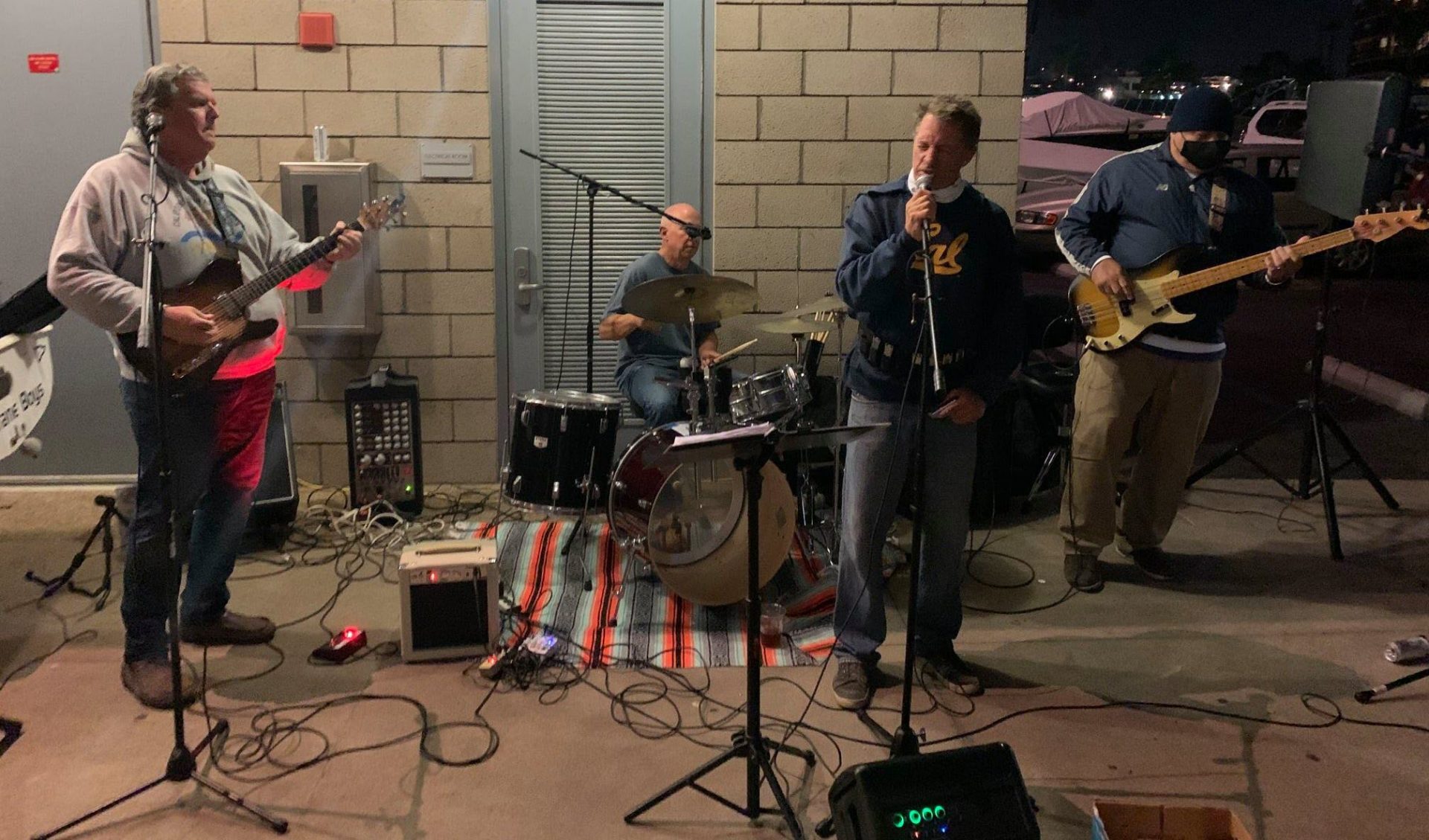
What are some things you do to get people engaged in the fleet and keep them coming out?
The biggest thing is making it fun. If it’s not fun, sailors will find something else to do. We have promoted racing in one design weekend regattas which are free monthly regattas run by our San Diego Yacht Club’s highly competent Race Office and volunteers. Everything is set up with electronic entry forms, NORs, SIs, and even tows out to the racecourse. Just sign, up, show up, and sail!
On Saturday night, we get sponsors to donate beer and other beverages and have an after-race social in the parking lot. And to make things even more fun, during the Finn North American Masters Championships, some Finn guys who play music put together a band to play some tunes. It was a great time!
Now, over two years later, the “Finn Band” will regularly play music on the Saturday night of our One-Design Weekend—all for free! We sit around, drink beer, listen to live music, get to know one another, and learn all the little sailing tricks and nuances that make a Finn go fast.
Another great tool is social media, more specifically, the California Finn Association Facebook page . Every time I sail, I bring a waterproof camera and take photos of everyone sailing, racing, or in the parking lot afterward. I post pictures and write up a little story and try to recognize guys finishing in the middle of the fleet. Before the racing, we ask some of the Race Committee volunteers to snap a few pictures or invite photographers to come out and shoot the bigger events.
Directly after the event, and even sometimes from my Finn, I post pictures and/or results ASAP. Sailors from around the nation are able to see the beautiful weather and the Finns sailing, and they get excited. Then my phone rings and we pick up new sailors. We also post stories in the SDYC Monthly Mainsheet magazine as well as the MBYC publication.
I have also come up with interesting trophies and often award them to sailors not just at the top, but guys making improvements in the fleet, or maybe award a spectacular Finn capsize and wipe-out, or the “Half Page” winner after I folded the results page in half, the sailor on top that sailed all the races won an award equal to the Finn winning the championship.
Lastly, I think that a set time and place for weekly outings is important for guys just to get out on the water, sail their boat and get a little practice in. Sometimes, I will meet with the newer fleet members and go over rigging, sail shape, mast position, or just overall techniques for sailing the boat.
Do you have any advice for someone thinking about starting a new fleet?
If someone has the passion to start a fleet, anything is possible, especially with today’s technology and abundance of one design sailboats around the country not being sailed.
One of the best tools for building a fleet is using the good, old-fashioned phone. There is nothing better than having a one-on-one conversation with someone thinking about going sailing. By touching base with current fleet members, we can keep them engaged and find out if there’s anything we can do to help get them up to speed, work on their boat, mast measurements, or picking up used sails or gear to help them improve on the water.
With the benefit of hindsight is there anything you would have done differently to start and grow the fleet?
No regrets, other than maybe I should have started building new Finns in the US, but then it would go from something I do ‘after work’ to becoming work!
In your opinion, what is the most important things to having a successful and active fleet?
By far I think the number one thing for a fleet to be successful is you need one or more “Spark Plugs”. You need someone calling people to get them out sailing, to show up at regattas, help with rigging, tuning, finding boats, or selling their boats if they are ready to get into a newer boat. You need someone to post pictures, no matter what quality, and post articles on social media, send out monthly regatta reports and newsletters, always touching base and encouraging sailors to sail their boats.
There have been many times that I have spoken with someone who is thinking about selling their boat, but after our conversation, they would get re-invigorated and want to sail again. Every fleet needs someone to breathe life into it, help build it, and help sailors to reach their potential. When the fleet is improving, everyone is then having fun and improving at the same time!
For additional resources and information, click here .
About the Author: Chris Snow is currently Chair of US Sailing’s One Design Committee. Chris is a professional sailor and coach living in San Diego, Calif. He was formerly the One Design Manager for North Sails in North America. To engage Chris’s services individually or for your group or club please e-mail him at [email protected] . You can learn more about Chris and get some more sailing tips at his website www.thefavoredend.com .

Tags: Chris Snow , Finn , growing the sport , Mike Dorgan , US Sailing
Related Posts
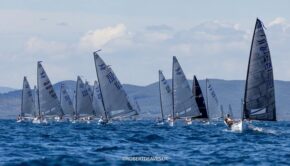
Competing within the limits of the rules →
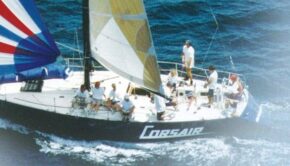
Securing the future of sailing →
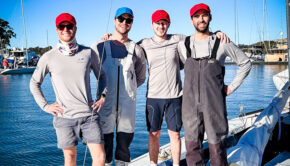
Hoping to inspire the next generation →
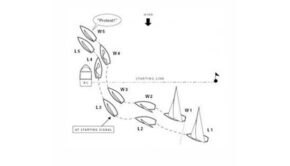
How would you decide this? →
© 2024 Scuttlebutt Sailing News. Inbox Communications, Inc. All Rights Reserved. made by VSSL Agency .
- Privacy Statement
- Advertise With Us
Get Your Sailing News Fix!
Your download by email.
- Your Name...
- Your Email... *
- Comments This field is for validation purposes and should be left unchanged.

- Leisure boat homepage
- Thruster See all Thruster Thruster See all
- Bow- and stern thruster See all Bow- and stern thruster Bow- and stern thruster See all
- Tunnel thrusters
- External thrusters
- Retract thrusters
- Control units See all Control units Control units See all
- Remote control
- Control panel
- Thruster upgrades See all Thruster upgrades Thruster upgrades See all
- Upgrade to E-series
- Intelligent Power Control
- Variable Speed Control
- Joystick integrations
- Installation parts See all Installation parts Installation parts See all
- Tunnels for bow installation
- Tunnels for stern installation
- Isolation kits
- Electrical accessories See all Electrical accessories Electrical accessories See all
- Power Cables
- Signal Cables
- External installation
- Retract Parts
- Spare parts See all Spare parts Spare parts See all
- Download Side-Power spare parts list
- Brushes and springs
- Drive pins and shear pins
- Electrical components
- Fastening components
- Gearlegs and brackets
- Hydraulic components
- Sealing components
- Flexible couplings
- Stabilizer See all Stabilizer Stabilizer See all
- Vector Fins™
- Control panels
- Power packs
- Accessories
- Spare parts
- Steering See all Steering Steering See all
- Rudder arms
- Power steering
- Installation
- Anchor windlass See all Anchor windlass Anchor windlass See all
- Remote controls
- Anchor lines
- Installation See all Installation Installation See all
- Signal cables
- Thru-hull fittings
- Anchor rollers
- Find a dealer
- Professional boat homepage
- Thruster system See all Thruster system Thruster system See all
- Thrusters See all Thrusters Thrusters See all
- Power cables
- Accessories for external
- Accessories for retract
- Stabilizer system See all Stabilizer system Stabilizer system See all
- Steering system See all Steering system Steering system See all
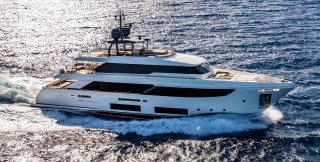
- What are yacht stabilizers and how do they work?
Marine stabilizer systems have been around for a long time, but are typically known for being used on larger passenger ships and superyachts. However, with the dramatically increased comfort and usability stabilizers add to any boat, it has also left owners of small leisure vessels wanting these systems.
What can stabilizers do for me, and why do I need them?
First of all, while most products available of various technologies and levels of efficiency are called stabilizers, the term itself is perhaps a bit misleading. What stabilizers do, is reduce roll movement of a vessel, but not very much of the pitch, sway, yaw, or massive movements you get on a vessel in waves. Luckily, in most situations, the roll is by far the most dominant and most uncomfortable motion, so reducing roll by a good percentage will make a substantial difference in comfort and safety on board.
When installing a high performing stabilization system onboard, you benefit from:
- More use of the boat as you can go out in more weather conditions.
- People that easily get seasick can now enjoy boating.
- Less wear and tear, as you don't have to always head into, or away from larger waves to avoid uncomfortable rolling motion.
- Reduced risk of accidents caused by unexpected boat roll.
- Increased crew awareness by less fatigue and discomfort.
With stabilizers you also benefit from reduced fuel consumption overall
While adding fins (or other stabiliser types), most systems will increase the fuel consumption a little at the same speed, fins by direct drag in the water, and gyros by adding weight. However, our claim is that the overall fuel consumption will be reduced because, with stabilizers, you can take the direct route to where you wish to go, even in rough conditions. You can also choose a more fuel-efficient speed, with the waves from the side, while still being comfortable (modern cruisers have less roll at higher speeds, thereby people often drive them hard to avoid the rolling). This is a generic statement for all fin stabiliser systems, with Vector fins™ this improves even further.
Stabilizers increase your boat's secondhand value
Surely, the boat will be a lot more attractive on the used boat market, boasting a system that allows people who might be prone to seasickness to reconsider their ability to enjoy the sea and thereby adding a whole new range of potential buyers.

- Knowledge hub

New electric stabilizers for boats 12 m and up!
The technology of superyachts, the experience and quality of CMC Marine , the leader in stabilization , now available for your yacht. Waveless STAB is the new generation of electric fin stabilizers: fast, ultra compact, low noise, low power absorption, top quality.
For yacht starting from 12 m (40 ft) LOA up to 35 m (115 ft).
Prices starting from 43.000 eur. Enquiry here or with any representative in our Service Network .
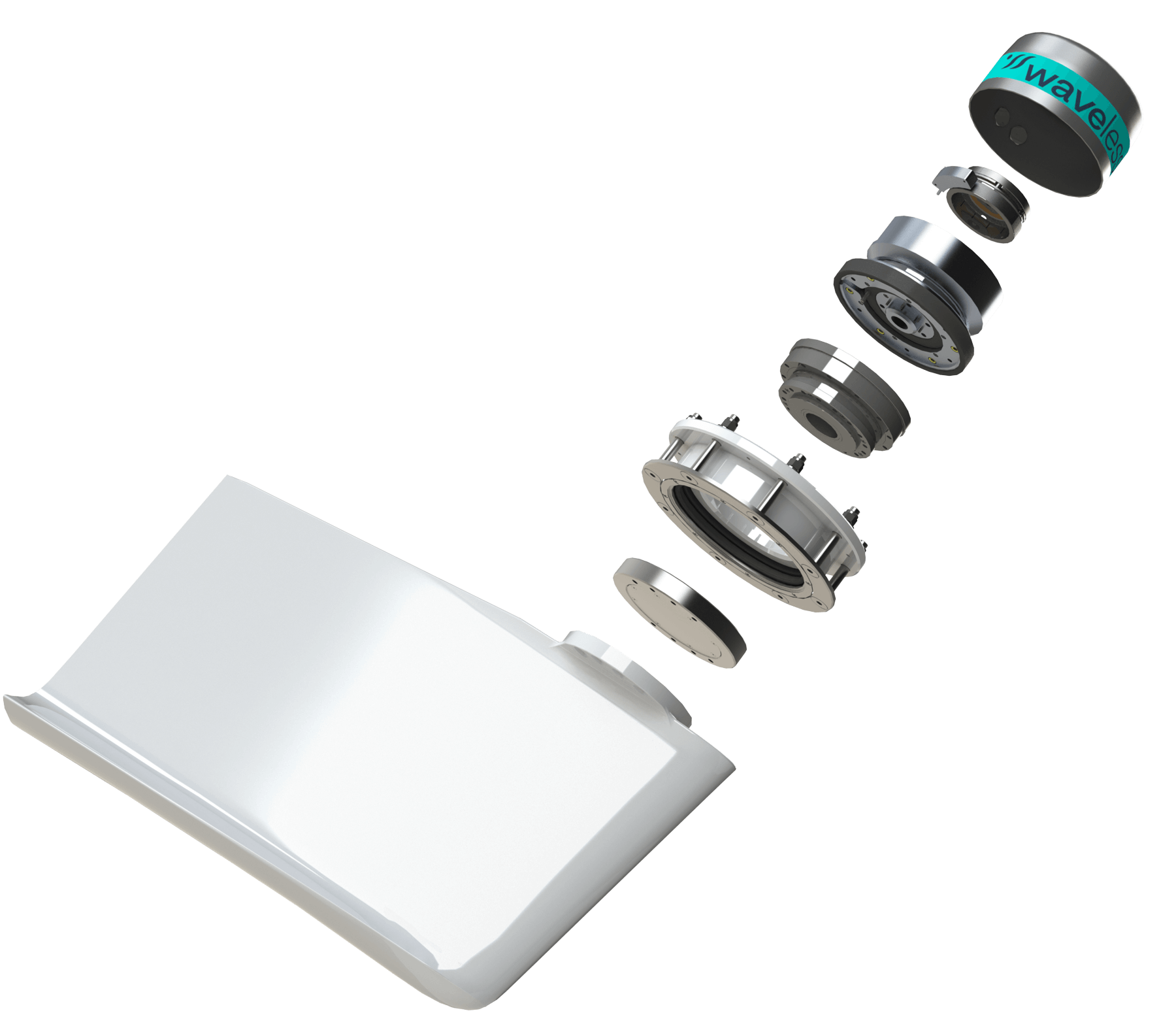
TOP QUALITY
Best-in-class roll reduction both Underway and At Anchor, with softer (lower acceleration) yacht motion for unequalled comfort.
Silent! Negligible noise and vibration, often installed under Owner’s or VIP’s beds.
ULTRA COMPACT
The smallest unit has onboard dimensions of 38 centimeters in diameter and 22 centimeters in height.
LOW POWER CONSUMPTION
High efficiency (>85%) means lower power demand on generators and reduced energy consumption.
LOWER MAINTENANCE
Zero maintenance required on electrical motor and gearbox. Remote assistance options for online, real-time diagnostics.
ECO FRIENDLY
No risk of oil spills and damaging pollution. More than 90% of the manufacturing materials are from recyclable materials.
FAST RESPONSE
Immediate ON/OFF mode.
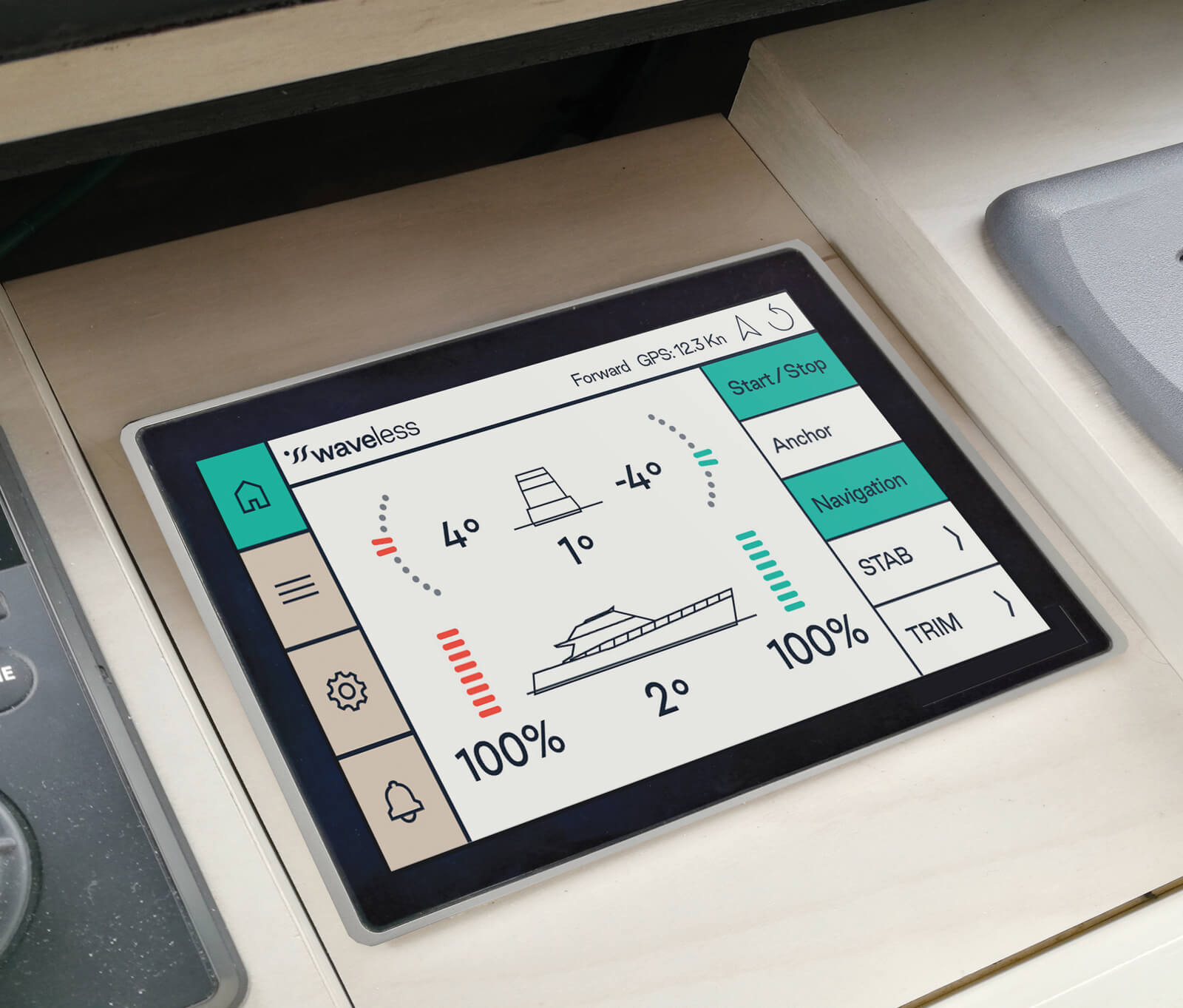
ALL THE CONTROL IN JUST ONE TOUCH
Waveless STAB are equipped with CMC Marine’s patented DIA-LOG software, the same used on super and mega yachts. Underway and Anchor mode always available.
You can have the complete control of your system thanks to a touch screen, designed to have all the feature at your fingertips.
Choose the most suitable stabilizer to your yacht
- REQUEST INFO
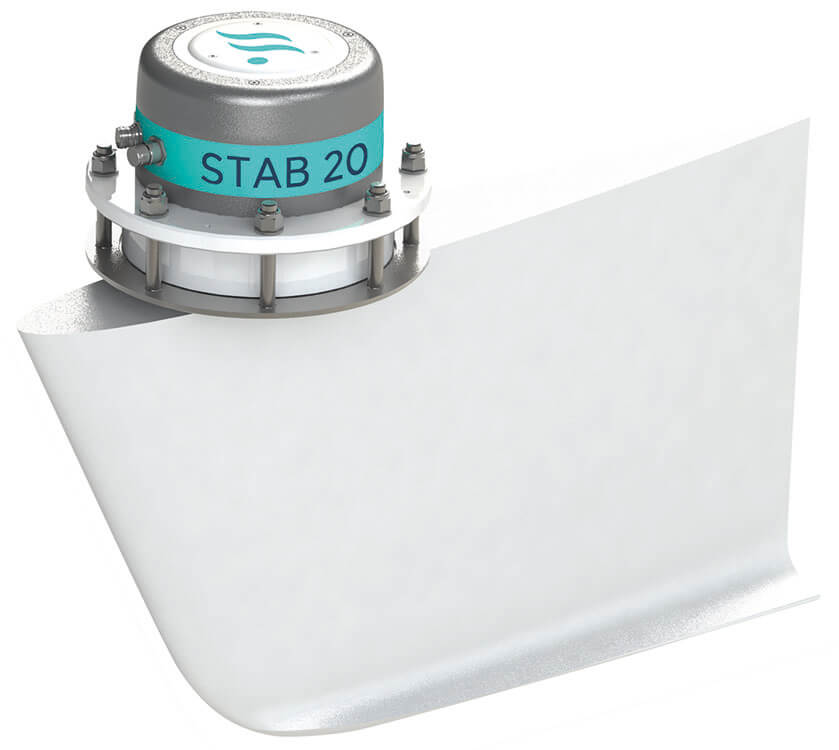
STAB 20 is the smallest electric fin stabilizer on the market. Ideal for yachts between 12 m (40 ft) and 18 m (60 ft) , thanks to its compact size and low power absorption. A game changer for your yacht!
Power supply
Power absorption - underway, power absorption - at anchor.
* Actuator only
Motor type: AC Torque (Brushless) with electromagnetic brake
Max fin rotational speed: > 80 deg/s
Cooling: NOT REQUIRED
Material: Fiberglass, ISO/NPG gelcoat
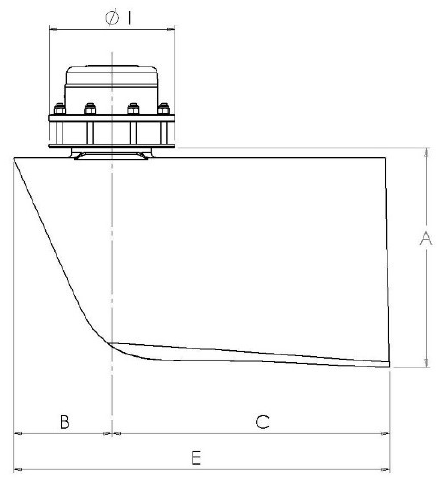
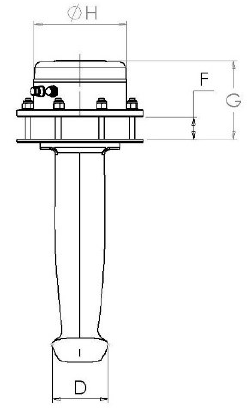
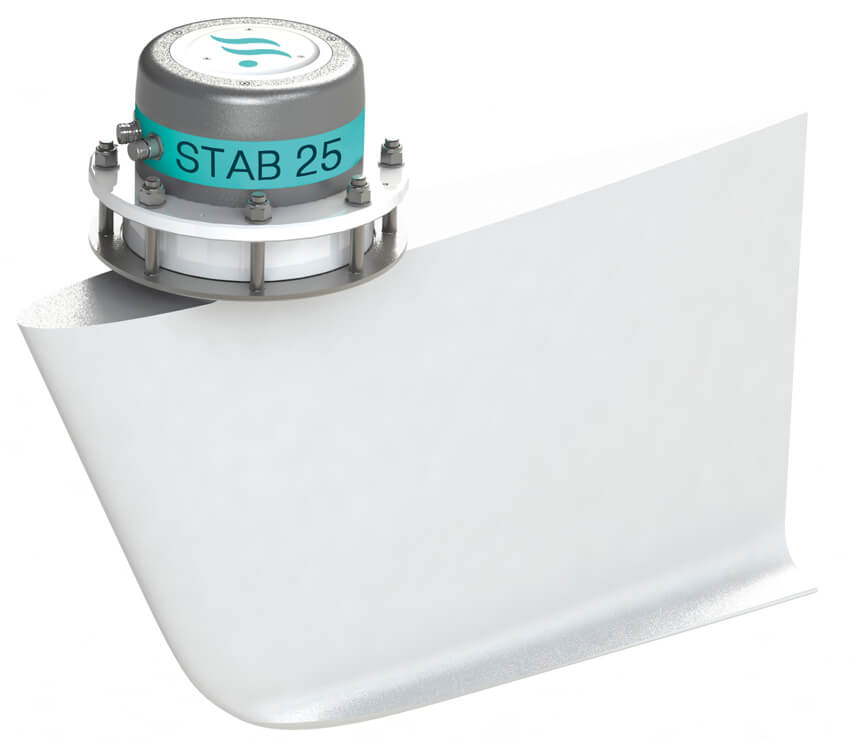
STAB 25 is the perfect fit for yachts between 15 m ( 50 ft) and 24 m (80 ft) , so small and energy efficient, that it can be retrofitted on any yacht!
Max fin rotational speed: > 80 deg/s
Cooling: NOT REQUIRED
Material: Fiberglass, ISO/NPG gelcoat
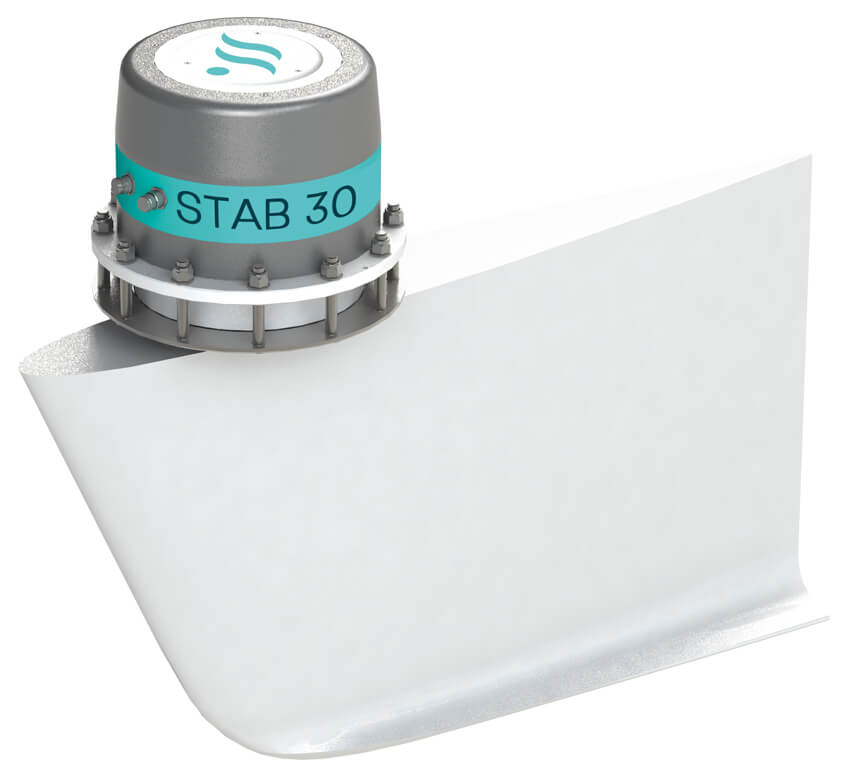
Designed for yachts between 20 m ( 65 ft) and 28 m (95 ft) , STAB 30 is the natural evolution of fin stabilizers. Small dimensions and easy to use, the perfect add-on to enjoy your yacht!
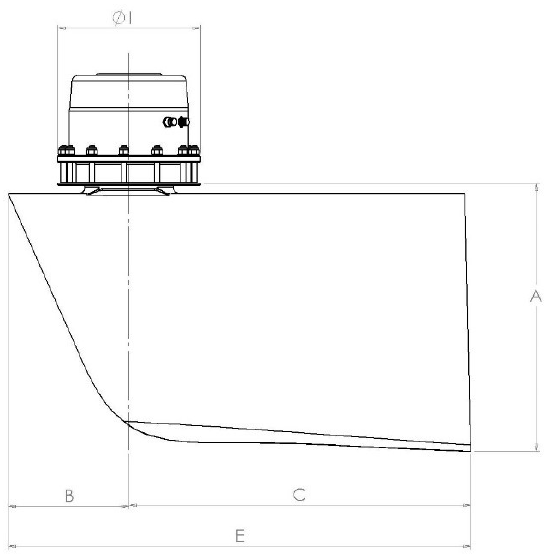
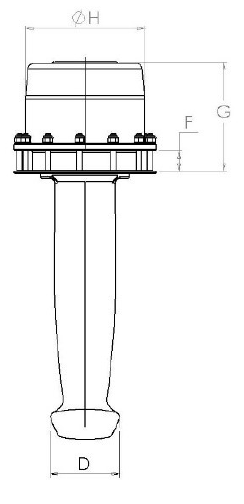
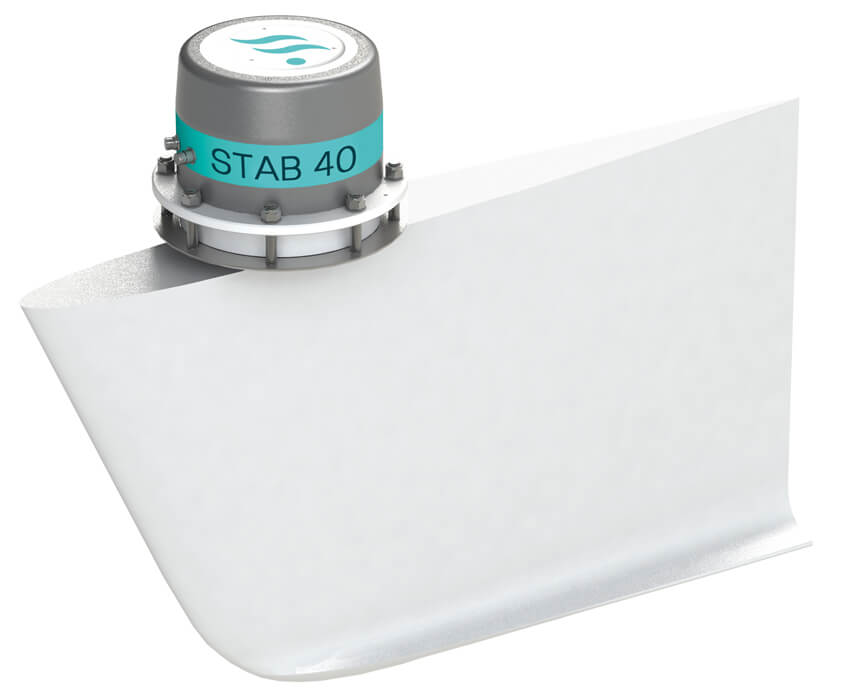
For superyacht from 25 m ( 80 ft) and 35 m (115 ft) , STAB 40 is a must have. Compact, efficient and easy to install, gives a new dimension at your experience on board!
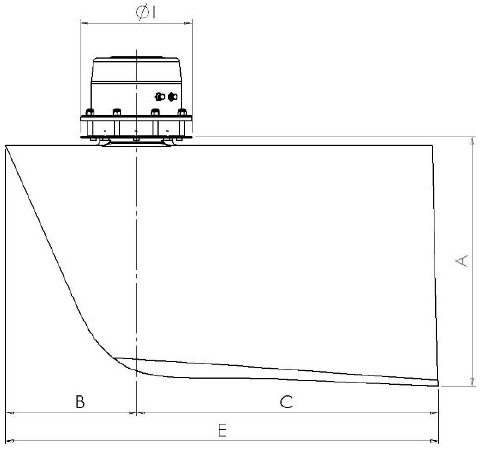
QUICK INSTALLATION
Waveless STAB is designed to be installed quickly and with no stress. It takes little space (and weight) on board so it can be moved and placed easily. And being electric, no piping is needed. Waveless STAB can be installed in just 3 days , or even less!
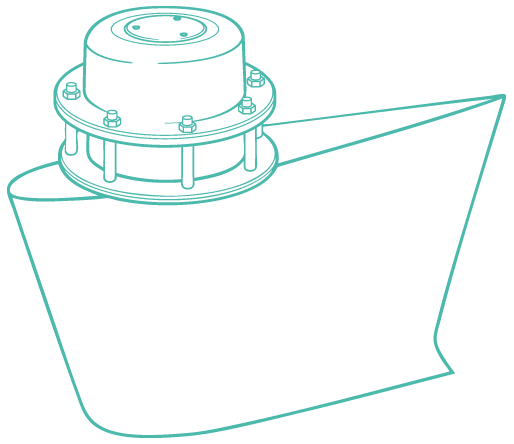
Prepare the hull with the required thickness for the installation and cut the hole for the STAB actuator (don’t forget the holes for the bolts too!)
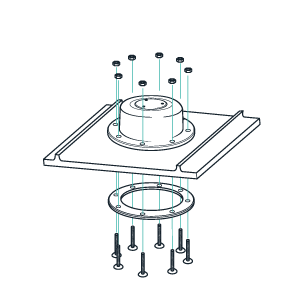
Insert the STAB actuator in the hole (no matter the position) from inside the hull and seal it with chockfast.
Place the counter flange on the outside and secure the STAB actuator to the hull using the bolts.
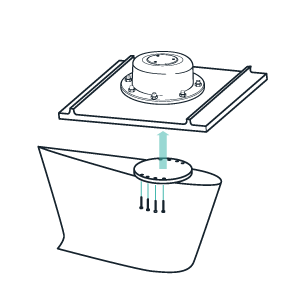
Place the fin flange on flange with the STAB actuator and fasten the bolts.
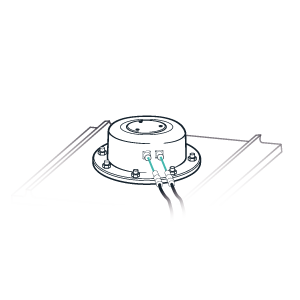
Plug in the power cable and encoder cable connectors.
Procedure for GRP hulls, contact us for details of installation on wood, steel aluminium.
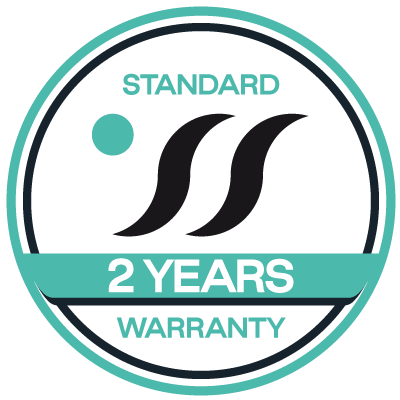
Standard warranty:
2 years and no limit on the running hours., are you interested in our stabilizers for your boat.
Vassel Data (provide as much data as you can)
Yes, I agree with the privacy policy .
©2021 CMC Marine All Rights Reserved | P.IVA / C.F. 02918770138 | Cap. Soc. 65.000,00 (I.V.) | Rea n. CO-285892
Privacy policy | Quality | Design by artmouse.it
- Stabilizers
Privacy Overview
| Cookie | Duration | Description |
|---|---|---|
| cookielawinfo-checkbox-necessary | 1 year | This cookie records consent for cookies in the "Necessary" category. |
| cookielawinfo-checkbox-non-necessary | 1 year | This cookie records consent for cookies in the "Analytics" category. |
| CookieLawInfoConsent | 1 year | This cookie records the consent given on the cookie bar (viewed_cookie_policy) and the values of cookielawinfo-checkbox-necessary and cookielawinfo-checkbox-not-necessary. In accordance with CCPA regulations. |
| PHPSESSID | session | The PHPSESSID cookie is a native PHP cookie and allows websites to store session state data. |
| viewed_cookie_policy | 1 year | This cookie records the consent given on the cookie bar. |
| wordpress_test_cookie | 1 year | Test if cookie can be set. WordPress also sets wordpress_test_cookie cookie to check if the cookies are enabled on the browser to provide appropriate user experience to the users. This cookie is used on the front-end, even if you are not logged in. |
| Cookie | Duration | Description |
|---|---|---|
| _fbp | 3 months | [Facebook] This cookie is used to distinguish and keep track of your unique users. This cookie is always stored. |
| 1P_JAR | 30 days | [Google] Used to customize ads on Google searches. |
| act | session | [Facebook] The act cookie contains a unix timestamp value representing the time at which the user logged in. Only if the user is logged into Facebook. |
| c_user | 3 months | [Facebook] The c_user cookie contains the user ID of the currently logged in user. Only if the user is logged into Facebook. |
| CONSENT | 1 year | [Google] Stores your preferences and information whenever you visit web pages containing Google services. |
| datr | 2 years | [Facebook] The purpose of the datr cookie is to identify the web browser being used to connect to Facebook independent of the logged in user. This cookie is always stored. |
| DV | 7 minutes | [Google] Stores your preferences and information whenever you visit web pages containing Google services. |
| fr | 3 months | [Facebook] Noticed this cookie is being used by Facebook. But not sufficient information on the use of this cookie. Only if the user is logged into Facebook. |
| locale | 1 week | [Facebook] This cookie contains the display locale of the last logged in user on this browser. |
| NID | 6 months | [Google] This cookie contains a unique ID used to remember your preferences and other information. |
| OGPC | 24 hours | [Google] Stores your preferences and information whenever you visit web pages containing Google services. |
| OTZ | 1 month | [Google] Stores your preferences and information whenever you visit web pages containing Google services. |
| presence | session | [Facebook] The presence cookie is used to contain the user’s chat state. Only if the user is logged into Facebook. |
| sb | 2 years | [Facebook] Noticed this cookie is being used by Facebook. But not sufficient information on the use of this cookie. Only if the user is logged into Facebook. |
| spin | 25 hours | [Facebook] Noticed this cookie is being used by Facebook. But not sufficient information on the use of this cookie. Only if the user is logged into Facebook. |
| usida | session | [Facebook] Noticed this cookie is being used by Facebook. But not sufficient information on the use of this cookie. This cookie is always stored. |
| wd | 1 week | [Facebook] This cookie stores the browser window dimensions and is used by Facebook to optimise the rendering of the page. This cookie is always stored. |
| xs | 3 months | [Facebook] This cookie contains the session number, the session secret and a ‘secure’ flag. Only if the user is logged into Facebook. |
Join our loyalty program & earn points every time you shop!
EXTRA 20% OFF thousands of pet faves online with code: SAVE20 thru 9/22* >
Top Fin Coral and Boat Aquarium Ornament
- Be the first to review

Join today to earn points, get FREE Shipping on select orders $49+ & more!
About this item.
- Description
Add color and beauty to your underwater world with this Top Fin Coral and Boat Aquarium Ornament. This beautiful artificial plant comes in in the form of a boat resting on a bed of coral, and will add greatly to your aquarium's aesthetic. Only at PetSmart.
Features: Boat and Coral Design Includes: 1 Ornament Intended Pet(s): Fish Color: Multiple Colors Product Dimensions: 5.25 in x 6.25 in

From the manufacturer
- Pet Services 2
- Help Center
- Treats Rewards program 2
- Track your order
- Accessibility Statement
- PetSmart Charities 2
- Canada Site

Ocupación israelí en Palestina, Líbano, Cumbre del Futuro, calentamiento global... Las noticias del miércoles

Facebook Twitter Imprimir Correo electrónico
La Asamblea General adopta una resolución que exige a Israel el fin de la ocupación en los territorios palestinos. La ONU alerta del riesgo de escalada en Líbano y pide que los responsables de las explosiones rindan cuentas. “No podemos crear el futuro para nuestros nietos con los sistemas de nuestros abuelos”, dice Guterres . El calentamiento global será de hasta 3 °C.
La Asamblea General adopta una resolución que exige a Israel el fin de la ocupación en los territorios palestinos
La Asamblea General de la ONU ha adoptado una resolución que exige a Israel "poner fin a su presencia ilegal en el Territorio Palestino Ocupado" y que lo haga a más tardar en 12 meses.
El texto obtuvo 124 votos a favor, 14 en contra y 43 abstenciones.
Entre los países que votaron en contra están el propio Israel, Estados Unidos, Argentina y Paraguay. Se abstuvieron entre otros, Costa Rica, la República Dominicana, Ecuador, Guatemala, Panamá y Uruguay.
El texto, no vinculante jurídicamente y preparado por Palestina, se basa en una opinión consultiva que la Corte Internacional de Justicia emitió en julio y en la que subrayó que la presencia continuada de Israel en el Territorio Palestino Ocupado es ilegal y que Israel tiene la obligación de cesar de inmediato cualquier nueva actividad de asentamiento, y de evacuar a todos los colonos del Territorio Palestino Ocupado.
La próxima semana el primer ministro israelí y el presidente palestino se dirijan a los 193 Estados de la Asamblea General.
La ONU alerta del riesgo de escalada en Líbano y pide que los responsables de las explosiones rindan cuentas

“Atacar simultáneamente a miles de personas, ya sean civiles o miembros de grupos armados, sin saber quién estaba en posesión de los artefactos atacados, su ubicación y su entorno en el momento del ataque, viola el derecho internacional de los derechos humanos y, en la medida en que sea aplicable, el derecho internacional humanitario”, dijo Volker Türk en un comunicado.
“Debe llevarse a cabo una investigación independiente, exhaustiva y transparente sobre las circunstancias de estas explosiones masivas, y quienes ordenaron y llevaron a cabo tal ataque deben rendir cuentas ”, añadió.
La detonación simultánea de buscas mató este martes al menos a 12 personas -entre ellas dos niños- y dejó miles de heridos. Este miércoles varias explosiones en walkie-talkies han causado tres muertos y cientos de heridos.
El Secretario General alertó, en rueda de prensa, del riesgo de una escalada drástica en el Líbano.
“Lo que ha ocurrido es especialmente grave, no sólo por el número de víctimas que ha causado, sino por los indicios que existen de que esto se activó antes, porque existía el riesgo de que se descubriera. Porque, obviamente, la lógica de hacer explotar todos estos artefactos es hacerlo como un ataque preventivo antes de una operación militar importante”.
“No podemos crear el futuro para nuestros nietos con los sistemas de nuestros abuelos”, dice Guterres ante la Cumbre del Futuro

António Guterres dijo que los desafíos internacionales avanzan más rápido que nuestra capacidad para resolverlos y pidió a los Estados miembros que usen la Cumbre del Futuro que se celebrará en Nueva York la próxima semana para crear instituciones más efectivas.
Las instituciones y los marcos mundiales son totalmente inadecuados para hacer frente a estos desafíos complejos e incluso existenciales, sostuvo Guterres explicando que “la arquitectura de la resolución de problemas mundiales nunca se concibió para ser conservada en ámbar”.
“No podemos crear un futuro adecuado para nuestros nietos con sistemas construidos para nuestros abuelos. La Cumbre del Futuro es un primer paso esencial para hacer que las instituciones mundiales sean más legítimas, eficaces y adecuadas para el mundo de hoy y de mañana ”, añadió.
El calentamiento global será de hasta 3 °C con los compromisos actuales

Los gases de efecto invernadero y las temperaturas mundiales siguen batiendo récords. Con las políticas y los compromisos actuales, se estima que el calentamiento global será de hasta 3 °C a lo largo del siglo, según se apunta en el informe Unidos en la ciencia .
“La ciencia es clara: estamos muy lejos de alcanzar los objetivos climáticos mundiales. 2023 fue el año más cálido registrado por un enorme margen. Los principales conjuntos de datos internacionales afirman que los ocho primeros meses de 2024 son también los más cálidos jamás registrados”, dijo la secretaria de la Organización Meteorológica Mundial , Celeste Saulo.
Saulo pidió “medidas urgentes y ambiciosas” y aprovechar la “oportunidad excepcional” que supone la Cumbre del Futuro para “reactivar y revitalizar” los compromisos.
- Derechos humanos
- calentamiento global
Content Search
Indonesia + 2 more
UNHCR Indonesia - Emergency Update: Rohingya Boat Arrivals as of 20 September 2024
Attachments.

SITUATIONAL OVERVIEW
Rohingya refugees have undertaken perilous sea journeys from Myanmar and Bangladesh seeking protection, family reunification, and access to livelihoods and education for years. In the last weeks of 2023 and early 2024, the pace of boat arrivals and the number of individuals disembarking in Indonesia rapidly increased. From mid-November 2023 to date, 15 boats carrying 2,026 Rohingya refugees (73% of whom are women and children) landed in Aceh and North Sumatera, Indonesia. While many have since departed Indonesia, 1,175 remain in informal and temporary accommodation in Aceh, North Sumatera, and Riau Provinces.
According to information provided to UNHCR by the new arrivals, the increase in the number of individuals undertaking the sea journey has been driven by a number of factors. These include the continued instability in Myanmar, lack of progress in addressing the root causes of Rohingya displacement and enabling conditions conducive for return, growing insecurity and declining humanitarian assistance in the camps in Bangladesh, more active smuggling networks, and a decrease in the cost of sea journeys.
These journeys are extremely dangerous and are often undertaken on unseaworthy vessels under the command of unscrupulous crew. In March 2024, a boat carrying approximately 142 Rohingya capsized off the coast of West Aceh, killing 67 passengers, including at least 27 children. Nearly 800 Rohingya refugees traveling by boat perished or went missing at sea in 2022 and 2023*, including a boat bound for Indonesia carrying approximately 200 refugees that is believed to have sunk in November 2023. Disembarked refugees report experiencing protection and security challenges at sea, including gender-based violence, physical abuse, malnutrition, exploitation, and extortion. Rohingya refugees confirm that they are aware of the risks but still board boats, highlighting the pervasive fear and sense of hopelessness that precipitate their decision to embark on these journeys.
In previous years, as per the 2016 Presidential Regulation 125 on the Handling of Refugees, Rohingya boats in distress were rescued and allowed to disembark in Indonesia by the navy, local authorities, and Acehnese coastal communities. Following disembarkation, authorities designated host sites where UNHCR, IOM, and other partners provided protection and basic assistance.
While many Indonesians remain supportive of and sympathetic to the challenges facing Rohingya refugees, those who arrived by boat in late 2023 and early 2024 met unprecedented resistance in Indonesia. Some Rohingya were prevented from disembarking, others disembarked only to be forced by local communities back on the boats and returned to sea, and many of those who disembarked have yet to be allocated adequate shelter by authorities. As a result, hundreds of refugees who have disembarked in recent months are currently living in extremely perilous, overcrowded, and sub-standard conditions in which the protection and assistance response is compromised.
While Rohingya refugees undertake journeys from Bangladesh and Myanmar throughout the year, the majority typically move between November and March when sea conditions are most favorable. Support is needed to bolster the response in the likely event that more boats carrying Rohingya refugees arrive in Indonesia in the last months of 2024. UNHCR anticipates 2.2 million USD will be required to respond to the needs of the current population and anticipated new arrivals in 2024. Only a fraction of needed funding has been received by UNHCR to date. The Rohingya boat arrival response remains seriously underfunded.
Related Content
Myanmar + 3 more
Myanmar Emergency Update (as of 2 September 2024)
Bangladesh: floods emergency appeal no. mdrbd036, bangladesh: eastern flash floods 2024 situation report no. 02 (as of 30 august 2024), unicef bangladesh situation report no. 1 (flash floods in northern and southeastern regions) 27 august 2024.
- New Sailboats
- Sailboats 21-30ft
- Sailboats 31-35ft
- Sailboats 36-40ft
- Sailboats Over 40ft
- Sailboats Under 21feet
- used_sailboats
- Apps and Computer Programs
- Communications
- Fishfinders
- Handheld Electronics
- Plotters MFDS Rradar
- Wind, Speed & Depth Instruments
- Anchoring Mooring
- Running Rigging
- Sails Canvas
- Standing Rigging
- Diesel Engines
- Off Grid Energy
- Cleaning Waxing
- DIY Projects
- Repair, Tools & Materials
- Spare Parts
- Tools & Gadgets
- Cabin Comfort
- Ventilation
- Footwear Apparel
- Foul Weather Gear
- Mailport & PS Advisor
- Inside Practical Sailor Blog
- Activate My Web Access
- Reset Password
- Customer Service

- Free Newsletter

Dufour 44 Used Boat Review
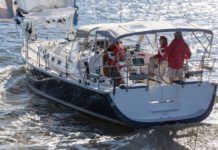
Blue Jacket 40 Used Boat Review

Catalina 270 vs. The Beneteau First 265 Used Boat Match-Up

Ericson 41 Used Boat Review

How to Create a Bullet-Proof VHF/SSB Backup

Tips From A First “Sail” on the ICW

Tillerpilot Tips and Safety Cautions

Best Crimpers and Strippers for Fixing Marine Electrical Connectors
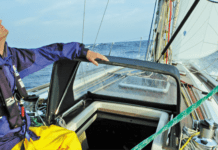
Solving the Dodger Dilemma

Polyester vs. Nylon Rode

Getting the Most Out of Older Sails

How (Not) to Tie Your Boat to a Dock

Fuel Lift Pump: Easy DIY Diesel Fuel System Diagnostic and Repair

Ensuring Safe Shorepower

Sinking? Check Your Stuffing Box
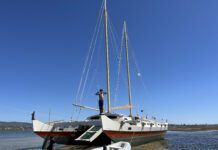
Why Choose the Wharram Design?
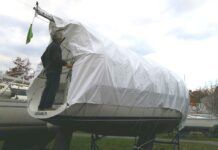
Winterizing: Make It Easy With Checklists

Boat Improvements for the Technically Illiterate

What Do You Do With Old Fiberglass Boats?

Stopping Holding-tank Odors

Giving Bugs the Big Goodbye

Galley Gadgets for the Cruising Sailor

The Rain Catcher’s Guide

Sailing Gear for Kids

What’s the Best Sunscreen?

UV Clothing: Is It Worth the Hype?

Preparing Yourself for Solo Sailing

R. Tucker Thompson Tall Ship Youth Voyage

On Watch: This 60-Year-Old Hinckley Pilot 35 is Also a Working…

On Watch: America’s Cup

On Watch: All Eyes on Europe Sail Racing

Dear Readers
- Sailboat Reviews
A Look at Sailboat Design: Fin Keels vs. Full Keels
Details like keel design count when considering cruising sailboats..

Photos by Ralph Naranjo
When a keel tears away from a sailboats hull, it makes the loss of a rig or rudder seem like a minor inconvenience. History shows that its an uncommon occurrence, but because we now annually hear of such incidents, weve decided to take a closer look at keels and see what keeps the ballast where it belongs.
The International Sailing Federation (ISAF) Offshore Special Regulations devotes pages to helping sailors prevent and respond to a crew overboard incident. There is nothing about how to handle the loss of a keel or ballast bulb. Some might say this is because such occurrences are so infrequent, while others note that, if youre still upright once the ballast breaks off theres not much you can do other than blow the sheets, douse the sails as quickly as possible and attempt to stop any leaks.
When solo sailor Mike Plants Open 60 Coyote lost her lead bulb in 1992, Mike was lost at sea. Other adventure-sailors have survived near instantaneous capsize precipitated by keel loss. In 2003, round-the-world racer Tim Kent and his crew capsized when Everest Horizontal lost its ballast on the way back from Bermuda. US Sailing Safety at Sea Committee Chairman Chuck Hawley was aboard the racing sloop Charlie, on the way back from Hawaii, when a loud groaning sound led to a deep heel as the lead peeled away from the keel bolts and ballast headed straight to the bottom. This encounter at least had a happy ending thanks to the crews quick actions to douse sail. Apparently the keel had been cast with too little antimony (an additive that causes lead to become a harder alloy). The point here is that keeping the keel attached is as important as keeping the crew safely on board. And for the offshore monohull sailor, preventing a keel loss, like preventing crew overboard, requires some informed forethought.
A ballast keel on a sailboat is a classic example of potential energy poised in a balancing act. The buoyancy of the hull itself offsets the effect of thousands of pounds of lead or iron. At rest, gravitys attraction for the dense material strains against the buoyancy of the hull, and the adjacent garboard region is continuously in tension. Few sailors spend much time contemplating how keel bolts corrode and what cycle-loading does to the resin matrix comprising the garboard region just above the ballast. What is apparent, is that the attachment material, whether it be wood, metal or fiber reinforced plastic (FRP), must be able to support a mass of metal weighing as much as a small truck-and do so day in and day out for decades.
Underway, every tack causes the rig and sailplan to try to lever this ballast package free from the hull. And when the helmsman starts daydreaming about lobster for dinner and wanders off course onto a granite ledge Down East, the keel designed to handle sailing loads takes it on the chin. Its easy to see why experienced designers and builders lose sleep over their decisions about keel shape, structure, and what kind of safety factor should be built into the structure.
Its surprising to discover that with better materials and computer-aided design, we still hear about incidents such as the Rambler capsize in the 2011 Fastnet Race (PS, May 2012). Just as significant is a spate of smaller race boat keel-ectomies that have caused ISAF to send out a cautionary note to sailors around the world, and introduce new structural standards for race boats. Keeping the ballast attached to the boat involves an awareness of a chain-like set of failure points. And one of the most difficult decisions each designer must make is how to marry foil efficiency with a structural safety margin that covers the boats intended usage and the unintended use of the keel as a depth sounding device.
For decades, engineers and naval architects have had to contend with some racing sailors Icarus-like quest-a trend that prioritizes shedding weight and making the keel foil a long, thin appendage with a high-aspect ratio. Though not quite a flight toward the sun with wings made of wax and feathers, some race-boat scan’tlings walk a fine line between lightweight and structural failure. The challenge lies in attaching a lead bulb on a high-tensile steel foil to a lightweight, high-modulus, FRP hull. Interconnecting the dense metallic ballast to the lower-density foam/fiberglass hull structure is a true engineering puzzle. Part of the challenge lies in the dissipation of point loads (confined to a relatively small area) and how to handle the resulting stress risers. A stress riser is the point at which theres an abrupt change in a materials flexibility, such as where a stiff, fin keel meets the more elastic hull bottom. In FRP composites like those found in a balsa-cored hull, stress risers are a likely place for delamination to occur. Over time, these can result in the failure of the FRP composite.
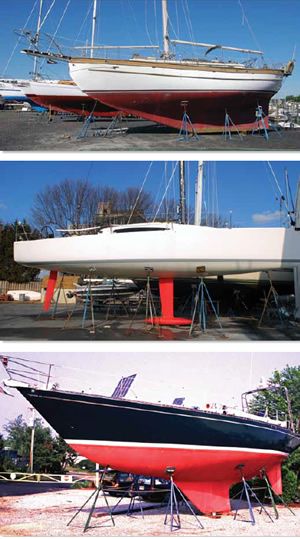
The see-saw effect of the keel counteracting a vessels righting moment is a mathematically predictable energy transfer. Even the effect of groundings such as those that turn hull speed into a dead stop can be quantified. But its the cumulative effect of fatigue (localized structural damage caused by cyclical loading) and corrosion that are harder to pin down.
The term allision refers to hitting a fixed object such as a granite ledge or coral reef. Naval architects analyze the energy transfer and evaluate the stress and strain characteristics that occur. The recognition that the keel-to-hull connection must endure even more punishment than is doled out in heavy-weather sailing episodes is at the heart of how structural specs are devised.
Designers also must consider the jack-hammer-like pounding of a keel on a reef in surf, and realize that there are limits to the abuse a keel and hull can endure. With this in mind, its reasonable to assume that sailboat keels should be built to handle sailing induced loads for decades. It is the extra safety factor built into the boat that defines what happens when the sandbar is a rock pile.
What is harder to anticipate are the unusual encounters that can inflict serious damage to the keel connection. Take, for example, what happens when a sailboats deep fin keel is wedged in a rocky cleft and a good Samaritan with a big powerboat attempts to pivot the sailboat using a line attached to the bow. The distance from the keels vertical centerline to the stem may be 20 feet or more, and with a couple of thousand pounds of bollard pull, the 20-foot lever arm creates a rotary force that can spike to 40,000 foot-pounds or more. This level of torque goes well beyond what most designers and builders model as sailing loads, and its likely to seriously damage the boat.
In plain low-tech talk, extreme fin keels provide a valuable performance edge, but they come with their own set of downsides that every owner needs to be aware of. In essence, the more radical the keel shape, the better the crew must navigate.
A couple of decades ago, PS Technical Editor Ralph Naranjo ran a boatyard and had a client who liked to cut the corners during Block Island Race Week. His first spinnaker reach into a granite boulder stopped the boat and shoved the companionway ladder upward six inches. This underscored how an allision that causes the keel to stop abruptly transfers a shock wave through the entire hull. The resulting compression cracked several transverse members in the New York 40 and damaged the core in the canoe body near the garboard.
The FRP repairs had to be tapered and all delamination problems resolved. The moderate-aspect-ratio lead fin keel absorbed a good deal of the blunt trauma. Judging from the cannonball-size dent on the leading edge of the lead keel, it was clear that the impact was significant. The dent offered grim proof of the advantage of having soft lead instead of steel as keel ballast. New floor frames were added, the broken transverse members were replaced, and the boat was off and sailing.
The next season, the boat had another Block Island encounter, and only because the Petersen-designed New York 40 was a pretty ruggedly built boat was a second repair even considered. This time, an equally violent keel-to-hull trauma came from an on-the-wind encounter with a different rock. The extent of the delamination was greater than it had been in the first go round, and more extensive core removal and repair was required. The keel was dropped in order to check the bolts and the garboard. With the bilge fully opened for the FRP repair work, the repair crew made a pattern of the canoe body dead rise and fore and aft contour. As the glass work was being completed, they fabricated a stainless-steel grid that would spread keel loads fore and aft as well as athwartship. The new grid reinforced the keel attachment and returned the sloop to the race course.
Afterward, Naranjo and the owner discussed the details of the repair, including the possibility of hidden, widespread damage from the two groundings. These included the dynamic loads imposed upon the chainplates and rigging, the likelihood of hidden resin-cracking, and potential for more delamination and core shear linked to the torque induced by the accident. In short, any serious allision causes overt and hard-to-detect damage far from the actual impact zone, and these can lead to more problems down the road. When buying a used boat, look for a good pedigree, but also look for signs of previous blunt-force trauma. A good surveyor will be skilled in such structural forensics, and he or she will do more than comment on the gelcoat shine.
In the early days of wooden ships and iron men, a lack of dense metal ballast put less point-loading in the garboard region of the hull. Bilges free of cargo were filled with rocks or tighter-fitting granite blocks cut for more compact stacking. The principal of ballasting a vessel was to lower her center of gravity (CG) and create both an increase in the righting arm and a greater righting moment to offset the heeling moment created by the rig and sail plan. The keel also helped lessen leeway and would evolve into an appendage that added lift.
Movable ballast had a few downsides, not the least of which was its propensity to move in the wrong direction at the very worst moment. Even small boat sailors have found out what can happen to unsecured pigs of lead ballast when the boat heels far enough over for gravity to overcome friction. Whether stones, lead, movable water ballast, or a can’ting keel are used to augment the boats righting moment, a sailor must anticipate the worst-case scenario. This is when the weight ends up on the leeward side of the boat and a bad situation can turn into a real catastrophe. Fixing or locking ballast in place, controlling the volume of water put in ballast tanks, and limiting the can’ting keels range are sensible compromises.

Internal ballast, the ballast inside a keel envelope thats contiguous with the hull, is still seen in many new boats. Island Packet is an example of a builder has stuck with this traditional approach of securing ballast without using keel bolts. Its a sensible design for shoal-draft cruisers, and the upsides are numerous. These high-volume, long-range cruisers arent encumbered by the demands prioritized by light displacement, performance-oriented sailors. Instead, Island Packets combine a rugged laminate and a long-footed, shallow-draft keel. This may not place the lead or iron ballast as deep as the tip of a fin keel, but it does keep the all-important CG low enough to deliver a powerful righting moment along with shoal draft.
In order to deliver the high angle of vanishing stability (AVS) also known as limit of positive stability (LPS), designer Bob Johnson puts what amounts to an internal bulb in the very lowest point in the boat. This long slug of iron or lead (depending on the model) is then covered by Portland cement, locking it in the Island Packets monocoque structure. The result is a contiguous FRP structure spreading keel loads efficiently over a considerable amount of hull skin. Keel bolts and the infamous garboard seam are completely eliminated. This approach to sailboat keel design dates back to the Rhodes Bounty II and other prototypes in the production world of sailboats. Now over 50 years old, many of these boats continue to have a tenacious grasp on the lead or iron that they hold.
Encapsulated iron ballast is much less desirable than encapsulated lead, and its sad to see builders skimp on this. Iron, or even worse steel, has been used in many Far Eastern encapsulated keels. It works as long as water and the resulting oxidation havent caused expansion and cracking of the seal. Lead is also denser than ferrous metal, and therefore, the same amount of ballast will have a smaller volume and create less drag.
Encapsulated ballast starts to be less appealing as keels become more fin-like and high-aspect ratio. The reason for this is that the geometry of the support changes, focusing more load on less area of the hull. As hull shapes evolved into canoe underbodies with hard turns in the bilge, and fin-like keels became thinner, deeper, and with shorter chord measurements (thickness), the concept of encapsulated keel became impractical. The Cal 40, Ericson 39, Pearson 365, and a long list of similar genre boats signified the end of an era when performance racer/cruisers would be built with encapsulated ballast.

External Ballast
Performance-oriented sailors and race-boat designers quickly latched on to hull shapes marked by deep-draft, foil-shaped, high-aspect ratio fin keels. From the late 60s to whats currently glowing on CAD screens in designer offices around the world, keels have grown deeper and shorter in chord length, and bulb or anvil-like tips have grown more and more common.
The design development was sound, lift was enhanced, and deeper-not longer-became the answer to getting to windward faster. The challenge was not only in designing an efficient shape, it lay in creating an attachment means that minimized foil flex and twist, retained the low drag coefficient, and still had the ability to withstand an occasional, albeit modest, grounding.
During this same period, marine surveyors and boatyard techs began to see moderate groundings result in major structural problems. The classic example was the allision that produced a moderate dent in the lead at the leading edge of the keel tip. In many cases, further inspection revealed cracks radiating outward from a knot meter or depth sounder mistakenly placed just ahead of the keel. An even closer look often revealed grid damage or a cracked bulkhead just aft of the last keel bolt. Like the New York 40 mentioned earlier, this was a result of a shock wave radiating through the hull structure. As we learned in Mrs. McCrearys science class, Bodies in motion tend to stay in motion, unless acted on by an equal and opposite force. Fin keel sailboats encountering abrupt energy transfers,tend to endure more damage than their long-keel counterparts.
A forensic look at the Achilles heel of external ballast highlights a few pitfalls. First the good news: Lead absorbs impact well, consuming much of the imparted energy through deformation. However, the translation of the remaining energy from the metal keel foil and keelbolts into an FRP hull is where we often find stress risers, and point loading linked to material and hull shape changes. The near right-angle interface between a modern sailboats canoe body and its deep fin keel is a classic load-path hotspot. In the old days, fiberglass techs spoke of oil-canning or the dimpling of a large section of the garboard as tacks were swapped.
Today Naval Architects use Finite Element Analysis (FEA) to better engineer hull structure. Colorized graphics pinpoint load concentration, glowing bright red in the region where the keel joins the hull, the epicenter of the oil-canning. A common solution to coping with this high-load focal point, is to eliminate core in the region and to gradually increase the unit schedule (layers of FRP), or to add an internal FRP grid. Maximum thickness of a keel stub is located where the keelbolts penetrate the stub. In this region, the solid glass thickness is often equal to the dimension of the keel bolt diameter or even greater.
Laminate thickness at the keel bolts is only part of the equation. Just as important is how the transition to the general hull laminate transpires. A bullet-proof keel stub that immediately transitions into a core hull comprising two units of laminate on each side of the panel creates whats equivalent to a tear-on-the-dotted-line weakness. Transitions that involve sharp angles and marked differences in panel strength require a well-reinforced taper that spreads loads gradually rather than abruptly.
Occasionally, we see massive metal frameworks used in the bilge as support for keel bolts; these structures need to be carefully engineered to not create the same hard spot fracture points. When carefully tapered in order to gradually introduce more flex, the problem is abated, as it was in the repair of the New York 40 mentioned earlier. The stainless-steel grid built to support the keel loads incorporated a gradual decrease in stiffness to the framework. The keel was carefully mated to the underside of this grid to ensure full contact (See Keel Bolt Repair Options, online). As a result, the crew relieved the hard spots at the end points and made the transition to the more flexible FRP hull less dramatic.
For cruisers, the take-away lesson is that extra reinforcement, a long garboard keel-to-hull interface, and internal transverse and longitudinal reinforcement really do pay off. Keep in mind that the extra weight this entails is all below the center of gravity and contributes to the secondary righting moment as well as keeping the water out.
This is a big departure from the way many modern production boats are built. They carry a skimpy ballast ratio of 30 percent or less, have less structure to support the keel and are not designed to handle unintended cruising consequences. There are exceptions, and its worth looking at the keel design and structure of the Navy 44 Mark II and the USCG Leadership 44 (see PS, August 2012). These boats utilize external ballast and are examples of rugged keel attachment. They have a relatively long keel-to-stub garboard junction, the laminate scan’tling meets American Bureau of Shipping recommendations, and both utilize an overabundance of 316 stainless-steel keel bolts and an FRP grid to keep the keel where it belongs.
There are many reasons why were seeing more keel problems today. On one hand, light, fast, race-boat design pushes the envelope, and thats probably OK. But when mainstream racer/cruisers start to suffer from lead loss, too much of one good thing (high-aspect ratio) and too little of another good thing (reinforcement) can begin creeping into design and construction.

RELATED ARTICLES MORE FROM AUTHOR
Leave a reply cancel reply.
Log in to leave a comment
Latest Videos
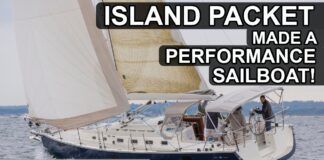
The Performance Sailboat from Island Packet: Blue Jacket 40 Boat Review

Top 3 Winter Boat HACKS!

Cabo Rico 34 Boat Review

Super Shallow Draft Sailboat: The Leeboard Sharpie
Latest sailboat review.
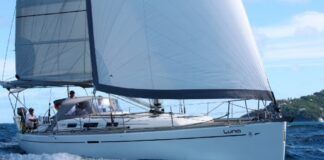
- Privacy Policy
- Do Not Sell My Personal Information
- Online Account Activation
- Privacy Manager
Yachting World
- Digital Edition

Finn dinghy: Farewell to Olympics
- Helen Fretter
- June 25, 2021
It has been a part of sailing in the Olympics since 1952, but this summer, when the Finn dinghy fleet takes to the waters of Enoshima it will be its final Olympic outing

This summer will be last time we see the Finn dinghy at the Olympic Games. In order to meet the directive from the International Olympic Committee for equal participation and events for men and women at the Paris 2024 Games, World Sailing made the decision to drop the Finn class from the Olympic roster, in favour of a mixed double-handed offshore event (along with a mixed kiteboarding relay race, while the mixed offshore event was itself recently ditched for separate Men’s and Women’s kitesurfing medals).
After the departure of the Star ahead of the 2016 Olympic Games, the Finn took up the mantle as longest serving Olympic class – a baton, which will now be passed to the 470 class.
The Finn dinghy is synonymous with greatness. It debuted as an Olympic class in Helskini in 1952, where gold was won by Danish legend Paul Elvstrøm, defending the heavyweight dinghy title he had won at London in the Firefly class.
Elvstrøm went on to win three consecutive Finn golds, setting the bar for a class that has been a rite of passage for many of the greatest sailors of all time. Jochen Schümann, Russell Coutts, Iain Percy and, of course, four-times Gold medallist Ben Ainslie fill the roll of honour.
With a 69-year Olympic history, the Finn is the longest standing item of Olympic sailing equipment, having been designed in 1949 by Swedish canoe designer, Rickard Sarby. The 1952 Games was also the first time the Soviet Union and People’s Republic of China took part, women track athletes ran no further than 200 metres, and the Fosbury flop hadn’t been invented, so seismic have the changes been to the modern Olympics since its introduction.

Finn dinghy class secretary, and author of several books on its history, Robert Deaves explains: “For many sailors, back then and today, the Finn became a lifestyle choice as much as an Olympic sport. Sailors would immerse themselves in a training routine, devoted to living and breathing the boat. The boat came to exemplify the Olympic motto of ‘Citius, Altius, Fortius’, as the sailors challenged themselves to become faster, better and stronger.
Article continues below…
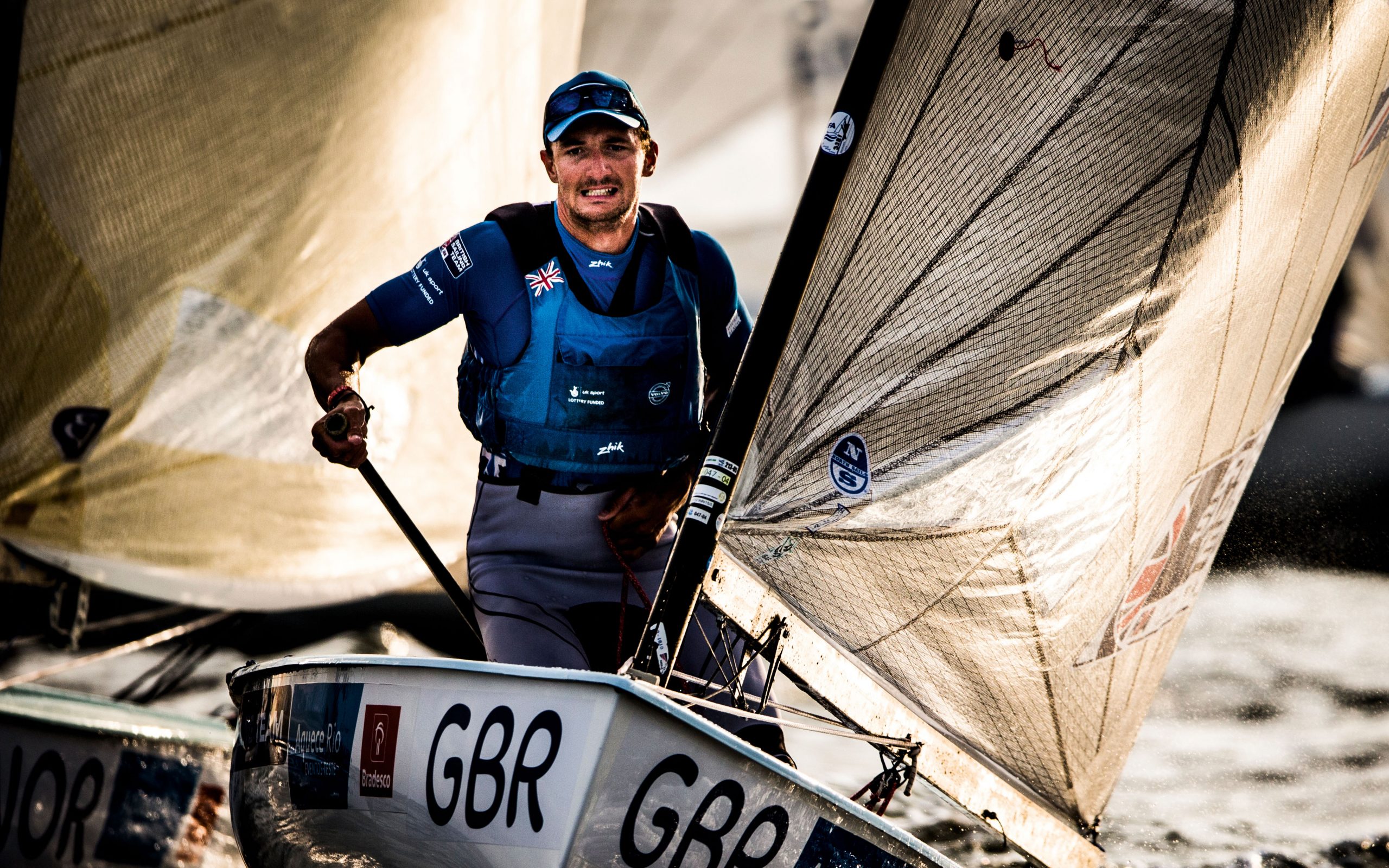
Giles Scott: Can the Brit secure a second gold in Tokyo?
Giles Scott is waiting. Like all of this year’s Olympic cohort, he is in a strange pre-Games limbo. Normally at…
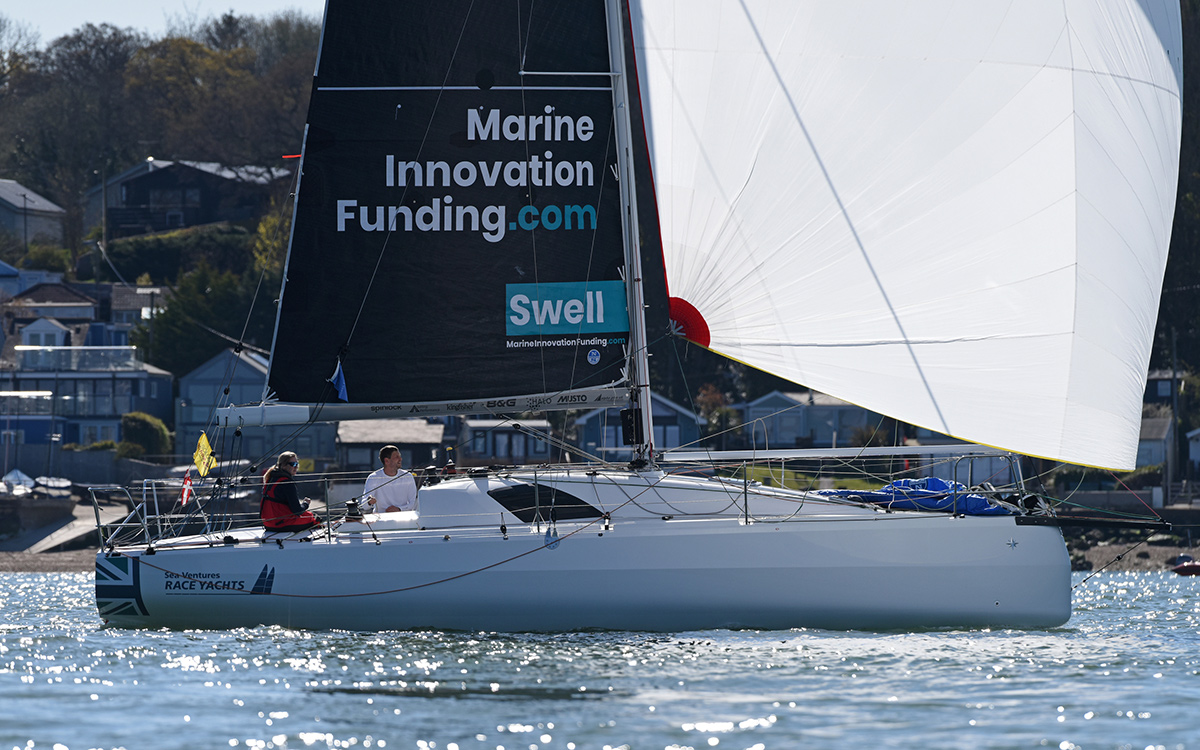
Shirley Robertson on why offshore racing should be in the Paris Olympics
With just three years until the 2024 Olympics take place in Paris, the Olympic sailing classes for the 2024 Games…
“The original boats had wooden hulls, wooden spars and cotton sails. Today’s Finns use modern materials such as carbon masts, Kevlar sails and GRP hulls, but the basic concept, shape and dimensions are the same.
“The key to the boat is twofold. First the hull needs the correct flexibility and ability to ‘twist’ through waves and gusts, and secondly the rig can be tailored to each sailor’s weight, height and sailing style. Improved technology such as carbon masts and GRP hulls made this process more scientific and repeatable. The objective is always creating power and speed, but also with the ability to depower automatically through the gusts, with the hull twisting and the mast falling off to open the leech.”
Ben Ainslie says part of the class’s appeal is that it is a complete test. “It’s a huge, huge physical challenge. To be successful in the class you have to be committed to your training, to the physical aspect of the sport, but also the technical challenges of making a Finn go fast set you in good stead for going into other areas, such as the America’s Cup. Understanding the dynamics of what makes the boat go fast is really critical to having a successful career.”
In 2018 the sport’s governing body, World Sailing, voted to replace the Finn dinghy at the Olympics with a mixed offshore class, in part due to the need for parity of men’s and women’s medals. The decision was much debated – not least following the IOC’s request that World Sailing propose an alternative, leading some to briefly hope that the Finn could be reinstated. But most believe the Finn’s days are forever over, leaving few Olympic options for heavier male dinghy sailors.
“I’ve always tried to stay away as much as possible from the politics side of World Sailing and class selection, and not really get involved,” says Giles Scott. “But I think it’s been a bit of a calamity of errors. It’s not been great that the IOC had to wade in. The Finn being on the butt end of that is obviously a shame, and I think every Finn sailor would say that because we do love the boat.
“But the one thing that stands out for me is that it is not necessarily the class, it’s the people, and the fact that there’s not really a replacement for the guys coming through that are too big to sail Lasers and 49ers.

“That’s the real shame because I think back and, if this had been happening 10 years ago or so, then I wouldn’t be an Olympic champion and I quite possibly wouldn’t have had the same doors opened for me in other forms of sailing.”
Ainslie concurs: “I think it’s a real shame. For the Finn class because of its history, but also for the sport of sailing, because it’s really hard to see an avenue at the moment for bigger athletes to compete in the Olympics and sailing.
“And I think that’s a real missed opportunity for the sport to be able to showcase athletes of that intensity at that size.”
Away from the Olympic circuit, however, there is every indication that the Finn will continue to flourish. The class not only runs enormously popular Masters events, but also Grand Masters, and even Grand Grand Masters, so lifelong is the loyalty of many Finn sailors to the design.
If you enjoyed this….
Yachting World is the world’s leading magazine for bluewater cruisers and offshore sailors. Every month we have inspirational adventures and practical features to help you realise your sailing dreams. Build your knowledge with a subscription delivered to your door. See our latest offers and save at least 30% off the cover price.

The Finn dinghy: THE Olympic singlehander
By Joe Cooper
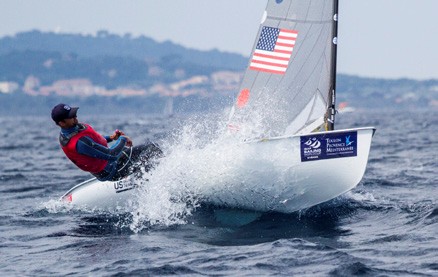
Success in the Finn, exemplified by US Sailing Team Sperry athlete Caleb Paine, who represented the USA in the Rio Olympics and won a bronze medal, demands considerable strength and stamina. © US Sailing Team Sperry/Will Ricketson
In 1975, I was sailing a Laser and working at Elvström Sails in Sydney. The Top Gun Finn sailor was Tony, and he used Elvström sails. I knew who he was, and he would come into the loft once in a while. One day I saw he and Mike Fletcher, one of the principals, talking and looking at me. Huh, oh, what had I done this time? Fletch beckoned me over and introduced me to Tony. We exchanged pleasantries and talked Laser sailing for a bit longer than a Formula One pit stop before he asked me what I was doing on Saturday. In even less time, I had agreed to meet him and sail a Finn with ‘some of the other blokes.’ I had just been recruited into THE most demanding, and Olympic, boat on the planet.
After sailing on that Saturday, we went to Tony’s house to wash off and get something to eat. Since he had been to the Kiel Olympics, he had a goodly supply of ‘Olympics stuff’ and pretty soon it was clear he was dangling the idea of the Olympics in front of me. Photo albums, posters of Kiel, funny stories of tooling around Europe in a VW bus, his hiking bench…and so on. It worked. For me, at about 19, with no particular direction and no pressing desire to do anything except surf or sail, the idea of the Finn AND the Olympic vision struck a chord. Here was something I could sink my teeth into. This focus became even sharper after spending time in the boat, reading about Paul Elvström, sailing with Tony and the boys and being exposed to the Olympic theme at chez James.
The Finn won the design contest in 1947 for a new singlehanded boat for the 1952 Olympics. It has the distinction of being The Olympic singlehanded class ever since. That is sixty-four years of serious, hard sailing. It has progressed from wooden hulls and masts to glass boats and carbon masts. It has a remarkably strong worldwide class. The roster of great, spectacular and seriously successful sailors that the Finn has produced is the Who’s Who of international sailing.
The Finn is heavy, slow and by modern standards not at all telegenic, unless you know what you are looking at. (Just like American football, right?) At 107 kg (235 lbs) on a nearly 15-foot LOA and with 114 square feet of sail but no trapeze, spinnaker or foils, sailing a Finn fast demands a level of physical fitness roughly equal to a hybrid of a marathon runner, a weightlifter, a single sculler and a shotputter – in fact, any other demanding athletic activities but all rolled into one. Then there are the technical aspects of the boat, and all this is before you get on the racecourse and retain sufficient mental acuity to deal with the art and science of sailboat racing.
Gary Hoyt sailed Finns for a bit and wrote a book that inspired me to excel in the Finn. Go for the Gold is a primer on one-design sailing with a focus on the mental approach, and includes two chapters on the Finn: ‘Sailing a Finn’ and ‘Gybing the Finn.’ Find it and read it. From the chapter ‘Sailing a Finn’ (paraphrased):
‘Above all, the Finn requires a certain toughness of mind and spirit. Pain is an integral part of the performance…your willingness to suffer is directly related to your speed…Finn sailors tend to be a class apart.’

Rather like ultra-marathons and the Ironman event, the Finn is the sailing boat that brings the primal urge for survival and capacity to override your brain’s screams to STOP to the fore. Unlike any other marathon event, a Finn regatta goes on for several days or several races over a weekend. After three races in 20-plus knots, the mettle of the man, for they are all men, is sorely tested. Sore being the operative word.
Sailing a Finn, at least in less than say 10 knots is satisfaction and pleasure personified. It just feels great. The way it rolls through the tacks and, after you get over the fear of gybing, through the gybes. The feel on the tiller, the way the mast and sail work together after several hundred hours of testing and fiddling, The top of the mast and sail are ideally matched to the crew weight so that when at full hike, the top of the mast depowers automatically. The smoothness, feel and joy of the Finn is sensuousness unmatched by anything else…in sailing, at any rate.
Let me say a word on the ‘hiking’ part of sailing a Finn. In most hiking boats, you put your feet under the straps and lean out. Depending on the boat the fitter you are the faster you go, without, compared to a Finn, all that much pain. In a Finn, your feet go under straps, your knees go on top of the side of the boat and the rest of you is hanging by your knees and quads off the side of the boat. The loading is taken on the biggest muscles in your body, your quadriceps. Big muscles need lots of blood and so oxygen to keep working. This physiology demands physical fitness of Olympic proportions. Mock up this position in your gym one day and see how fit you are.
In a lot of boats the downwind part is a kind of break time…well, from the serious physicality of hiking upwind, anyway. In the Finn, over 10 knots, no such luck. Several years ago, the Finn Class abandoned the Kinetics rules at wind speeds over 10 knots, thus with the hoisting of the appropriate flag, pumping, ooching and rocking is a free-for-all. It is possible the downwind part of sailing a Finn in over 10 knots is harder than the upwind part. Think I am kidding? Go to the Finn YouTube channel and watch Sir Ben Ainslie sailing downwind in 20 knots.
For all of you high school sailors, male and too big for Lasers, looking for a challenge, go find and sail a Finn. I guarantee you it will change your life one way or another. Taking on the Finn will be one of the biggest challenges you will face in your sailing career and quite possibly in your life, for the lessons learned in a Finn are useful in all aspects of life.
Ever since the introduction of the Laser, the Finn has been referred to as the Olympic Heavyweight single-handed boat. Well, they got that right. The Laser is a sailboat in the Olympics. The Finn is an Olympic boat.
Australian born, Joe ‘Coop’ Cooper stayed in the US after the 1980 America’s Cup where he was the boat captain and sailed as Grinder/Sewer-man on Australia . His whole career has focused on sailing, especially the short-handed aspects of it. He lives in Middletown, RI where he coaches, consults and writes on his blog, joecoopersailing.com , when not paying attention to his wife, teenage son, dog, two cats and several, mainly small, boats.
Share this:
Previous article, next article, leave a reply cancel reply.
You must be logged in to post a comment.

Yachting Monthly
- Digital edition

How keel type affects performance
- Chris Beeson
- December 2, 2016
James Jermain looks at the main keel types, their typical performance and the pros and cons of each

A fin keel and spade rudder configuration gives high pointing but can be sensitive on the helm Credit: Graham Snook/YM

James Jermain has tested hundreds of yachts in his 30 years as Yachting Monthly’s chief boat tester
The performance and handling of a yacht depends on many things, but perhaps the most important single feature is the shape of the hull and the profile of the keel. Over the years hulls have become shallower and keels narrower, but for many types of sailing this progression is not necessarily progress. Of the various shapes that have evolved, each has its own advantages in different circumstances. Here is a run-down of how they may fit your sort of sailing.
FIN KEEL WITH SPADE RUDDER

A low wetted surface area and aerofoil shape means speed and agility
The most common modern option, usually combined with light but beamy hulls with high freeboard.
GENERAL AND TO WINDWARD
- Low wetted surface and good aerofoil shape means good speed, high pointing and quick tacking
- Light steering
- Best designs can slice through heavy seas in reasonable comfort
- High volume, light-weight designs can be lively and tiring in heavy weather
- Flat sections can cause slamming
- Less steady on the helm, requiring more work and concentration
- Strong tendency to round-up when hard pressed
- Generally require earlier reefing
- Can be unstable when hove to
- Quick to surf and may even plane
- Can broach easily and suddenly
- Can be directionally unstable and hard to control in heavy conditions
UNDER POWER
- Handling is precise and turns tight and quick
- Some handle almost as well astern as ahead
- Limited lateral area so susceptible to beam winds at low speeds
- An unattended helm can slam over suddenly
FIN KEEL WITH SKEG RUDDER

The skeg running aft protects the rudder and improves tracking under sail and power
Similar to above but with some key differences.
- Skeg provides better support for the rudder
- Tracking under sail or power is improved
- There is less chance of damage
- More wetted surface so potentially slower
- Objects can get stuck between rudder and skeg
- Limited balancing can make helm heavier

The mass of a long keel is often more seakindly and will carry way well.
The traditional option, usually found on pre-1970s designs.
- Good tracking
- Slow, soft, comfortable motion
- Drive powerfully through short seas but can be wet
- Carry way through tacks
- Resist rounding-up
- Heave-to well
- High wetted surface area and a poor aerofoil shape, so speed reduced, tacking slow, leeway increased and pointing ability reduced
- Long ends can cause hobby-horsing
- An unbalanced hull or rig can cause heavy helm
- Track well and very resistant to broaching
- Very stable in heavy conditions
- Reluctant to surf (a mixed blessing)
- Carry way well
- Track straight
- Heavy construction can reduce vibration and noise
- Large turning circle ahead
- Unpredictable and hard to control astern
LIFTING OR SWING KEEL

A lifting keel enables beaching, but beware of stones jamming the plate
The ultimate shallow-draught option.
- A fully retracting keel offers shallowest draught
- A well-designed lifting keel can be very efficient and fast
- Grounding on anything other than soft mud or sand can damage an unprotected hull
- Stub keels offer better protection but are less efficient and prevent level drying out, except in soft mud
- Stones and dried mud can jam the lifting plate
- Internal keel boxes reduce accommodation space
- Directional stability is poor
- Early surfing and planing
- Control can easily be lost in strong winds
- Good performance and handling with keel down
- Directional control increasingly poor as the keel is raised
TWIN OR BILGE KEEL

A bilge-keeler will dry out upright on a flat bottom
A popular shoal-draught option in Britain, less so abroad.
- Shallower draught
- Dry out upright on a flat bottom
- Good protection when grounding
- Good designs are better to windward than long keels, almost as good as fins
- Pointing and speed to windward is reduced, considerably so in older designs
- When well heeled, waves can slap under the windward keel
- Can topple over if one keel finds a hole or soft ground

Modified water flow over the wing keel foot can give the motion of a longer, heavier boat
Once popular, now largely replaced with various types of bulb.
- Reduced draught
- Low CoG means good righting moment
- Modified water flow over keel foot means greater efficiency and gives the motion of a longer, heavier boat
- More likely to pick up lobster pots, etc
- Risky drying out
- Weed and barnacle growth under wings difficult to remove
Enjoyed reading this?
A subscription to Yachting Monthly magazine costs around 40% less than the cover price .
Print and digital editions are available through Magazines Direct – where you can also find the latest deals .
YM is packed with information to help you get the most from your time on the water.
- Take your seamanship to the next level with tips, advice and skills from our experts
- Impartial in-depth reviews of the latest yachts and equipment
- Cruising guides to help you reach those dream destinations
Follow us on Facebook , Twitter and Instagram.

Boat Keels & Fins: 7 Types Explained (For Beginners)
A keel is basically a structural component of a boat or ship which looks like a fin that extends at the bottom of a boat on the center-line.
A keel of the boat is usually the first component that is constructed while building a boat. The main purpose of a keel is to offer both strength and balance to a ship or boat while it is in the water.
These keels are available in different designs, as explained below:
Table of Contents
7 Types of Boat Keels Explained

Keels may be found in six varying designs, giving rise to six keel types.
They include:
- Bilge keels
- Centerboard keels
- Canting keels
1) Full Keels
This particular keel by design covers at least half of the boat´s length.
It contains a forward edge that bends upwards, while its aft edge usually links to a rudder. This type of keel has a key advantage of providing directional stability as well as relatively safe and strong grounding of the boat or ship.
When referring to safe grounding, the full keel is safer if the boat gets to lie on hardened ground.
The full keel offers a stable and strong balancing surface for the hull whether the boat is along the coast or while traveling.
A boat or ship which is made with a full keel rides smoothly while traveling in the water, providing great directional stability. For instance, if the full keelboat is well balanced, it enables a boat to stay in the compass direction with the keel keeping the boat in a steady direction.
A full keel design is the traditional style of older wooden boats and many newer boats. It has many years of experience that provides a comfortable and safe boat.
2) Fin Keels
This type of keel has a length that is less than half of the hull length. It is designed with a flat shape that is sharp-pointed at its trailing edge and resembles a shark’s fin. This type of keel is very fast , it contains less wetted surface as compared to full keels, and it also has a deeper draft than the others.
Often, the deeper the fin keel´s draft is, the better it makes a ship or boat sail.
When it comes to speed and racing, as well as performance, the fin keel is unbeatable.
3) Bulb Keels
This particular keel is often referred to as a shoal draft fin keel. Typically, a deep fin keel is made shorter and then connected with a torpedo-like bulb made from lead material at the bottom of the keel.
It is specially designed to be shallow to allow sailing or cruising within the Bahamas or the Chesapeake Bay as well as other areas with shoal water depths.
However, this design does not significantly compromise the boat´s performance since they have been used on older racing sailboats.
If you are planning to sail over shoal waters, a bulb keel may be appropriate. Sometimes, they are not as shallow as other special full keelboats, however.
4) Wing Keels
The Wing Keel may be used as an alternative when sailing in shoal waters.
This does not use one bulb at the bottom of the keel; instead, it makes use of two plates that are attached laterally at the bottom of the fin keel.
This type is considered by some to be better when it comes to performance as compared to bulb keels since it minimizes tip vortex turbulence while sailing. Its draft is usually less.
Additionally, since the two sides are designed in a manner that they offset each other, as the boat heels while sailing, the lateral resistance is not reduced as much as with straight or bulb keels.
However, this type of keel is hard to free in case the boat gets stuck into the muck. Their wings usually go deep and grip onto the bottom of the ground, making it difficult to release once it gets stuck.
Some of the advantages of a wing keel include:
- Minimized draught
- deeper center of gravity, which implies they have better righting moments
- re-engineered water flow above the keel foot implying that they have high efficiency and results in better sailing characteristics.
On the other hand, its disadvantages include:
- It can be more difficult to free if the boat goes aground
- this type of keel is likely to collect objects such as lobster pots as it sails
- and weed may grow at the bottom of the wings, which can become hard to remove.
5) Bilge Keels
These double bilge keel makes a boat stay upright in case of a dried out low tide.
This design results in a shallower draught as compared to fin keels. This feature makes it appropriate for sailing in shallow waters along the coastlines.
However, this type of keel does not perform as well as a single keel and is therefore used for sailing instead of racing.
6) Centerboard Keels
This is yet another alternative that may be used in shoal waters.
The centerboard keel contains a base keel, which has an internal centerboard that rotates downward to create a deeper keel when sailing.
If the waters are deep, the sailor gets better performance with the centerboard down. If you are sailing in shoal waters, you should sail with the centerboard upwards.
This feature is important as it helps to provide the boat with a performance similar to a deep keel and yet to offer improved maneuverability in shoal waters.
However, the main disadvantage of the Centerboard keel is maintenance. It is difficult and problematic when it develops mechanical issues.
7) Canting Keels
This type of keel is the most unique when it comes to performance.
It is connected onto a special (strong) hinge, and as the boat or ship heels, the crew uses hydraulics to move the keel in the windward direction.
This process of moving the keel in a different direction from your heading direction makes it possible to maximize the lateral force and the righting force, to sail faster.
The main challenging posed by this keel is maintenance due to the complex design of the canting keel. It is usually only found in specialized racing boats.
It has a promising future when it comes to racing, but it is not recommended too often because of its complicated operations.
Common Problems With Boat Keel and Fins
First, fins and keels are not protected from potential external impacts. By their design, they are long components with lever-like arms.
Therefore, if an underwater object was to be hit, like a sunken piece of log or even the sea bed, the force that would result is likely to be multiplied before being re-transmitted onto the entire boat over the keel area.
Therefore, the small surface is likely to encounter excess loads, which may result in cracks.
For instance, on the Chesapeake Bay, the majority of the creeks range from 4.5 -5 feet downwards. Boats and small ships that attempt to get too close to shore may often get grounded at some point. The moment grounding happens, the force which results and exerts pressure onto the keel is strong enough to generate cracks on the keel or along the hull.
The cracks are only physical indications of the damage caused.
For instance, the bolts which are connecting the keel and the hull at the bottom of the bilge may be frequently wet, resulting in bolts rusting and getting corroded.
When this happens, the forces together with rusted bolts will result in the keel falling off. This is dangerous and can cause severe accidents.
When the keel is removed or damaged, and the keel bolts develop holes, it allows water to flow into the hull. If the holes remain in that condition for a while, this may cause the boat to sink as a result of the incoming water.
Also, when the keel has been compromised in some way, the ballast or righting weight, which helps to counter the sails, is eliminated. In this case, if strong wind heels over your boat, it may result in the boat capsizing!
To make it worse, after the ship has capsized, you will not be able to right it since the ballast will not be there. Therefore, when a keel is destroyed, it makes the sailing horrible!
Finally, if you want to sail a boat with a fin and keel, it is recommended to avoid sailing through shallow waters. In case your boat gets grounded, the underwater appendages may be destroyed, and repairing such elements is very expensive and time-consuming.
You should take a fin keelboat or ship as a deep water machine! In deep waters, it glides over and through the water waves efficiently and easily.
Click to share...
We use Cookies to keep our website safe and secure, to enhance your website experience, to provide social media features and to help us analyse our site. To learn more about the cookies we use and to learn how to manage your cookie preferences, please see the Cookie Policy section of our Privacy Policy .
Sailboat Keel Types: Illustrated Guide (Bilge, Fin, Full)
The keel type is one of the most important features of your boat. But the different designs can be confusing, so I've set out to create a very clear guide that will help you understand sailboat keels once and for all.
What are the most common sailboat keel types? The most common sailboat keel types are full-length keels, fin keels, bulb keels, wing keels, bilge keels, and lifting keels. Full keels are popular among cruisers, while fin keels are generally used for racing. Bilge keels and lifting keels are typically used in tidal waters, on small fishing boats for example.
In this article, we'll explore the most common keel types together. I'll use diagrams to really hit home the differences of all these keel types, and we'll discuss what keel types are best for liveaboard, ocean cruising, and lake weekend trips. After reading this article, you'll know what to choose - and why.
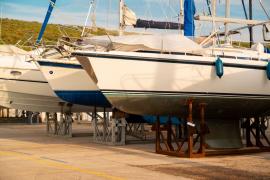
Sailboat Keels Explained
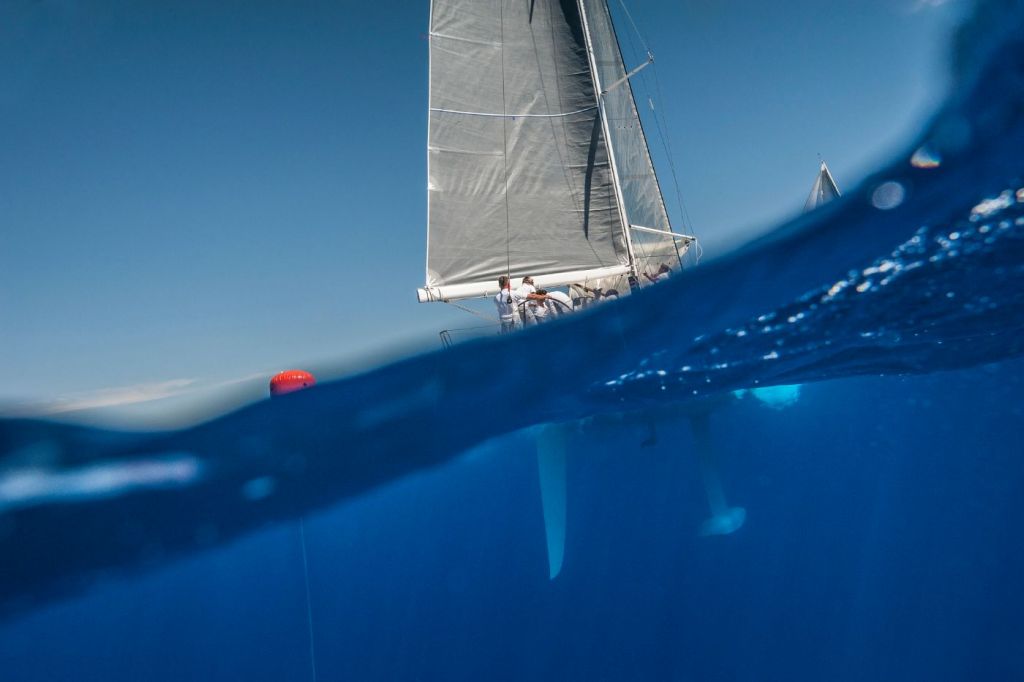
On this page:
Overview of sailboat keel types, keel types: fundamentals, modified full keel, centerboard.
If you just want a quick overview, here's a list with the most common keel types and a short description. More detail will follow below.
The most common keel types
- Full keels run from front to aft and are the most stable keel type, making them the most popular cruising keel.
- Fin keels offer the best performance but are less comfortable. This makes them popular for racing. Fin keels are bolted on to the hull and generally run deep and thin.
- Bulb and wing keels are both variants on the fin keel.
- Bulb keels carry additional ballast in the tip, making them more stable.
- Wing keels have two tips at the end of the keel, which reduces crossflow, improving directional stability.
- Bilge keels are double fin or double full kees, which allows the boat to be beached, making them the most popular keel for tidal waters.
- Lifting keels are moveable keels that can be lowered and raised, allowing the boat to enter shallow waters as well.
- Centerboard keels are a pivoting lifting keel, allowing to sail both coastal and inland waters.
- Leeboards are fins on the sides of flat-bottomed hulls boats, making a keel unnecessary.
Properties of each keel type
| Keel type | Comfort | Maneuverability | Speed |
|---|---|---|---|
| Full keel | +++ | -- | -- |
| Modified full keel | +++ | - | - |
| Fin keel | - | ++ | ++ |
| Bilge keel | + | + | - |
| Lifting keel | - | ++ | ++ |
| Leeboards | -- | -- | +++ |
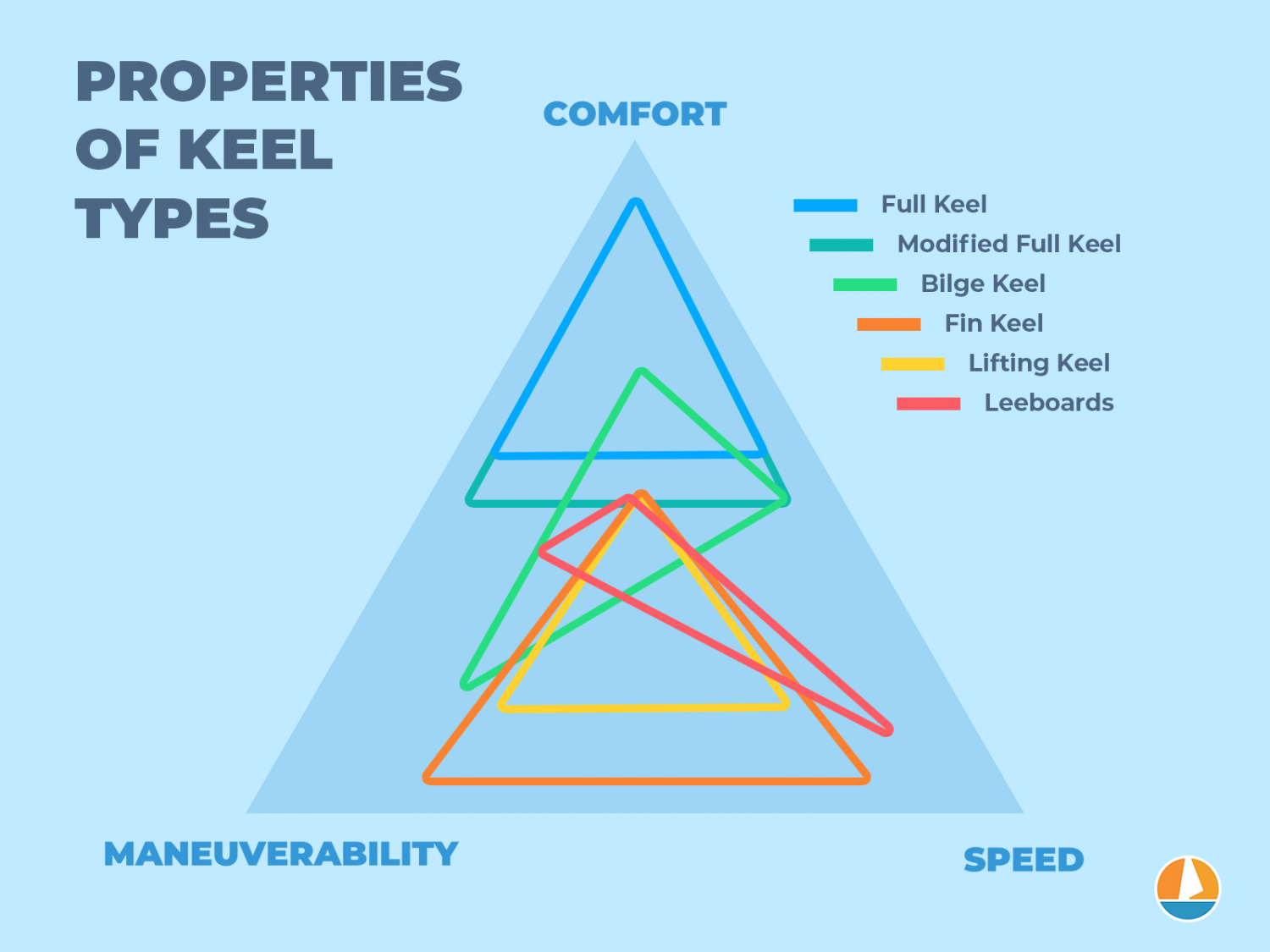
What does a keel do?
What does the keel do? A keel is a vertical blade running down from the hull. It is weighted and acts as a ballast, countering the boat's tendency to heel and preventing it from tipping over. The wetted surface under the waterline reduces slippage to leeward by creating a track, which counters the sideway force of the wind on the sails.
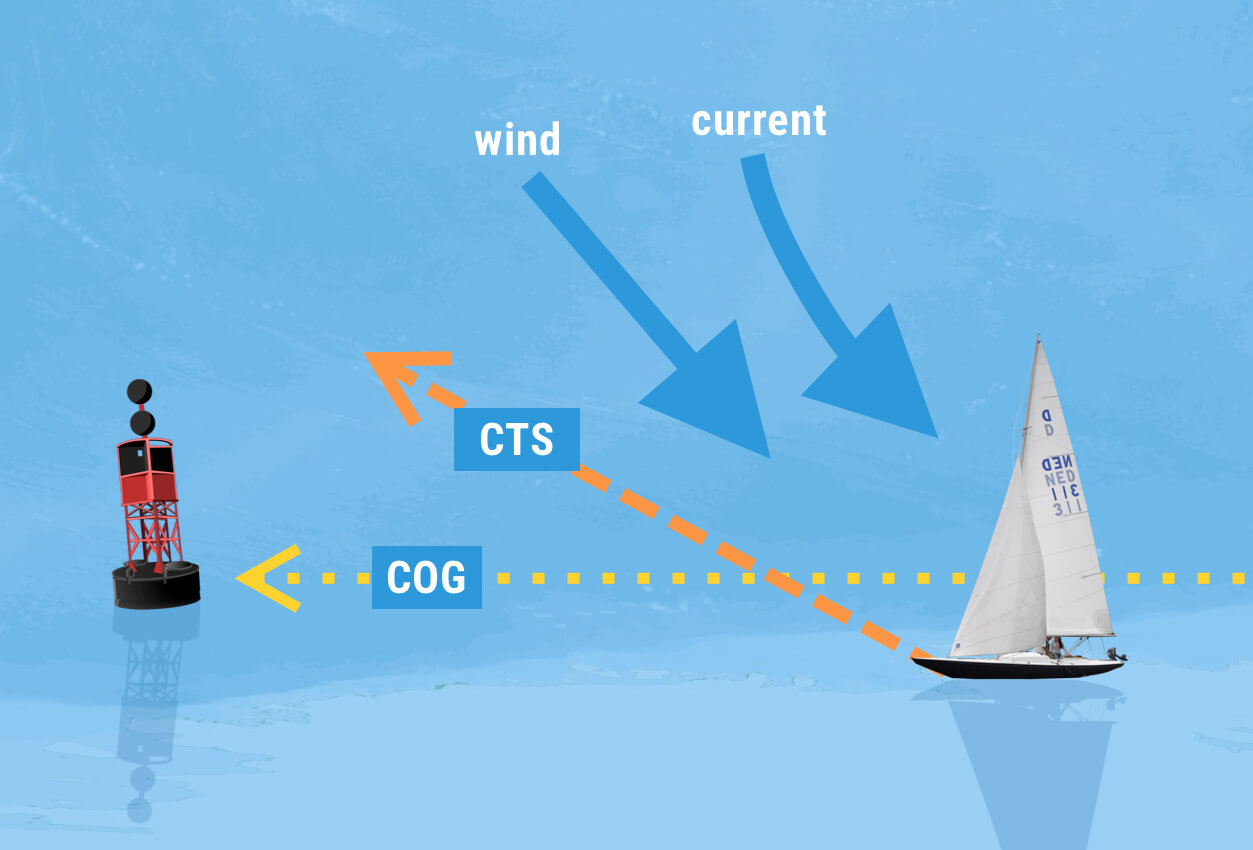
The reason sailboats don't tip over is that the weight of the keel counters the buoyancy of the hull, which means it will pull the boat downward. This downward force reduces heel and prevents the boat from rolling.
A canoe doesn't have a keel. Try stepping into that: it will want to roll.
It counters the horizontal force the wind puts on the sails. Whenever the force on the sails increases, the resistance of the water on the keel increases proportionally.
The heavier the keel, the less heel you'll get.
A keel reduces slippage to leeward. Slippage is simply the amount you fall off course because of the direction of the wind and current. Leeward is the side of the boat behind the wind.
So if you don't have a keel, you will fall off course quite a lot because the wind will push you over the water surface.
You will also heel quite a lot since there is nothing beneath the water surface to counter the force of the wind high up in your sails.
A keel fixes both of these issues and makes sailboats one of the most reliable boats in heavy winds and storms.
You can read on about how keels work here.
Keels can be classified by multiple dimensions. You can look at them from the side or the front. You can also classify them based on properties.
Before I dive into each keel type in-depth and show examples, let's make sure we have the same starting point.
There are essentially two sorts of keels:
Fixed keels
Movable keels.
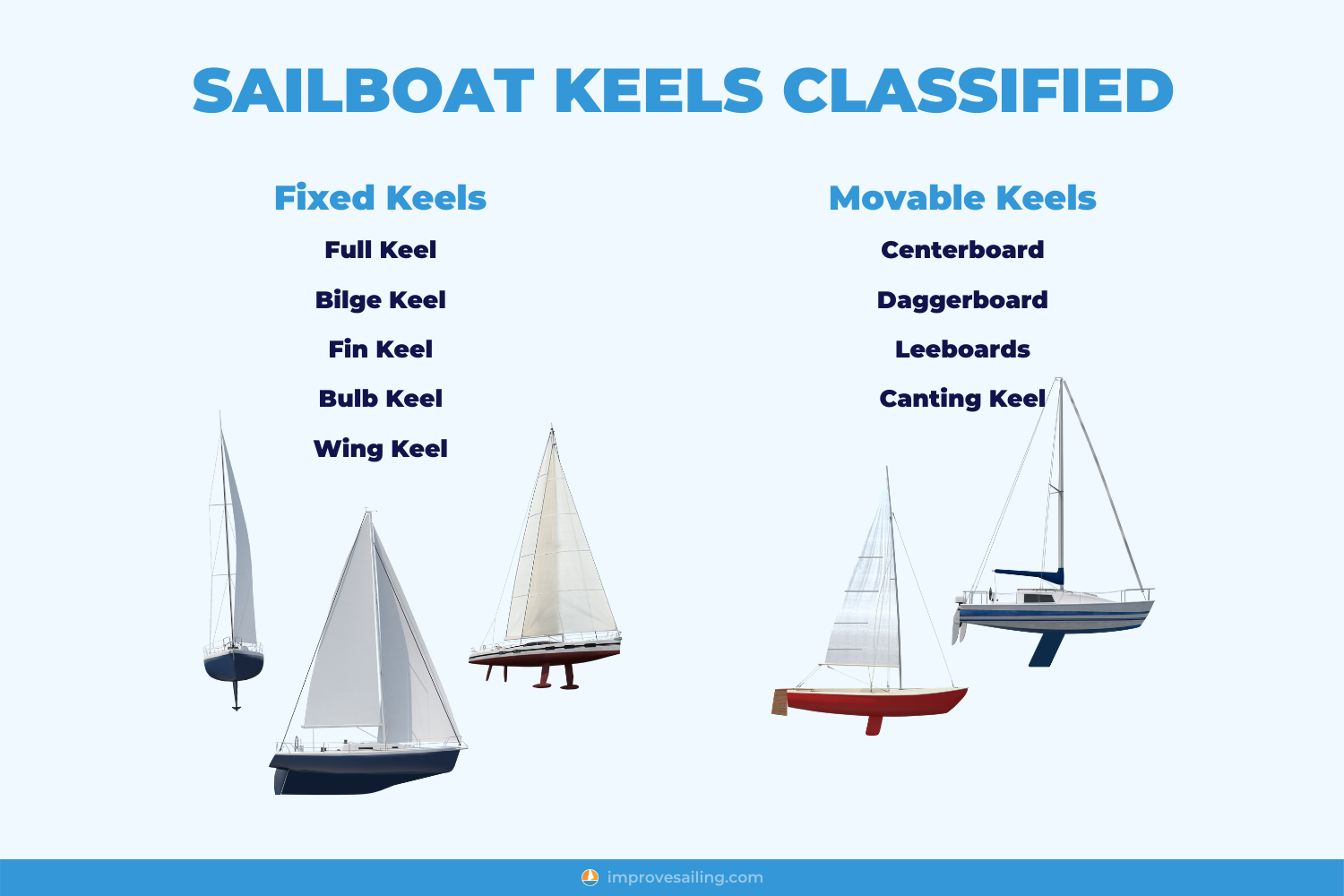
Fixed keels are keels that are integrated into the hull or bolted on. They can't be moved or lifted.
When looking at fixed keels, you can divide them up further based on the side view. There are three main categories:
Bilge keels
Full keels are more comfortable, provide better stability and protection, but are also slower than fin keels.
Fin keels are less comfortable, provide less stability, are more vulnerable, but they're also a lot faster than full keels.
Bilge keels are double keels: one on each side of the hull. This allows them to be beached, which comes in handy in tidal waters. They are generally a lot slower and less maneuverable compared to fin keels.
Movable keels can be lifted from the water, creating a shoal (shallow) draft, allowing the boat to enter both shallow waters and coastal waters. This makes it a very versatile keel type. There are two main designs:
Lifting keels
Lifting keels can be lowered and raised through a slit in the hull. Examples of lifting keels are the daggerboard and centerboard.
Leeboards are wooden swords attached to the side of the hull and prevent slippage to leeward, but they don't stabilize the boat, nor counter heel by adding ballast.
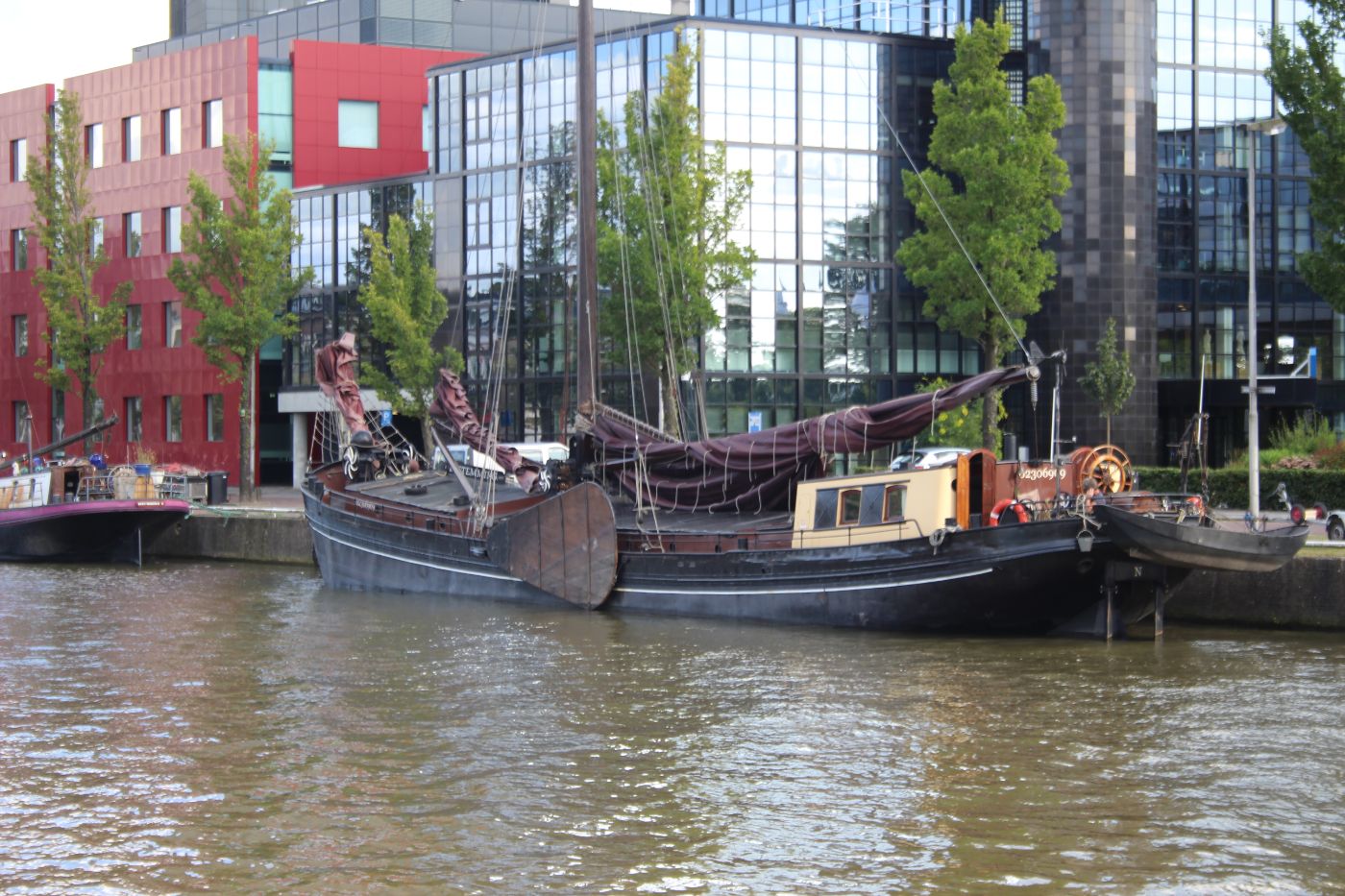
With fin keels, there are different tip designs available. The most common two tip designs are:
These are both variants of the fin keel. Generally, these keel designs are mentioned in one breath with full keels and fin keels, creating confusion on what kind of keel they are. But it's important to understand that they are a sub-category of fin keels.
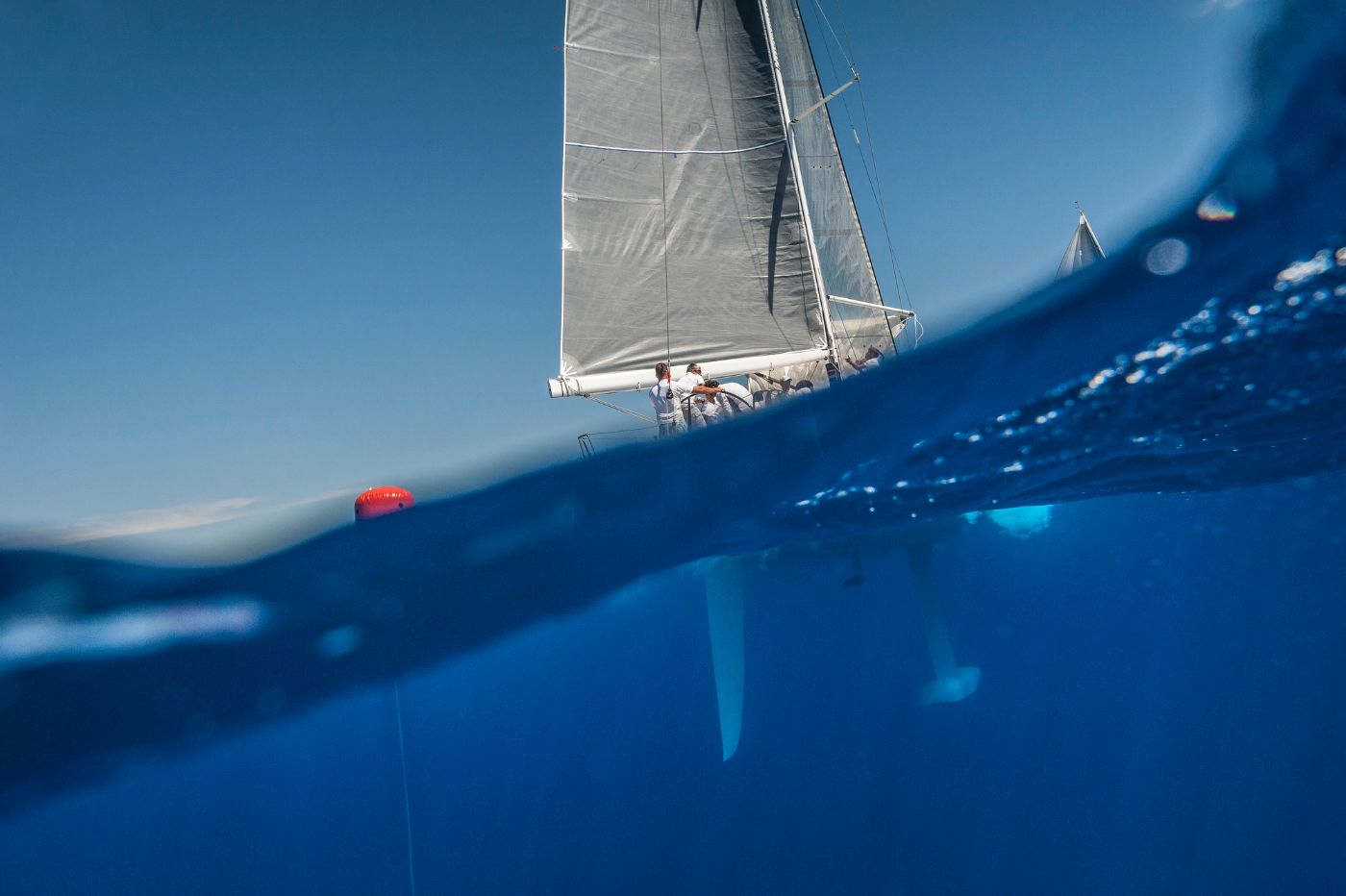
Rudder design
As with the tip of the fin, there are different rudder designs that may apply to both fin and full keels. The two most common rudder designs are:
Skeg rudder
Spade rudder.
A skeg is a structural part of the keel in front of the rudder that protects the rudder. The keel encompasses the rudder, preventing any rogue ropes, weeds, or rocks from damaging the rudder.
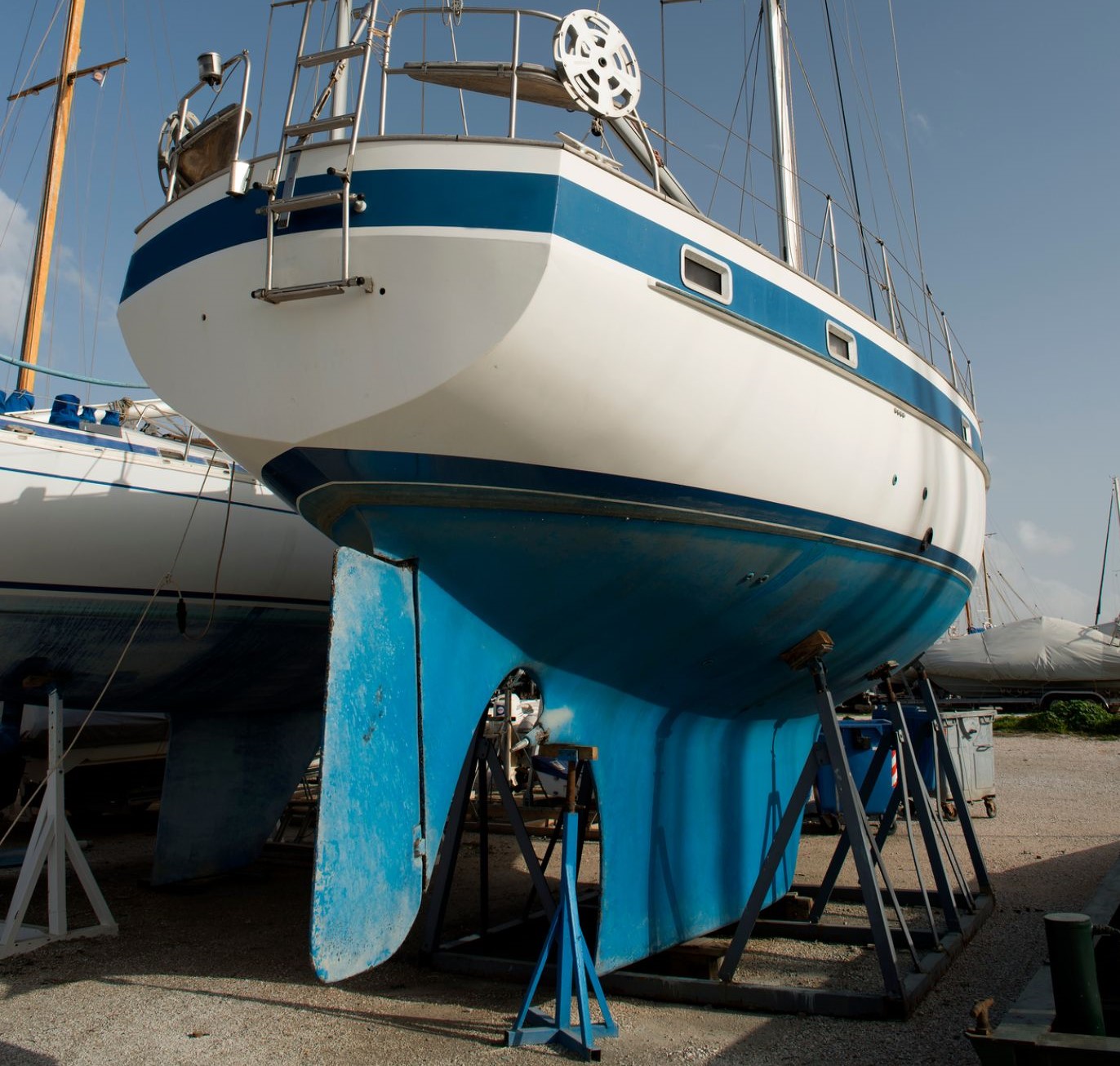
A spade rudder is an unprotected rudder: it doesn't have any structural protection from the keel design. It is simply attached to the hull. This design is very common.
Alright, we understand the big picture. Let's dive into more detail for each keel type and discuss the pros and cons.
Fixed keel Good for cruising and liveaboards Comfortable
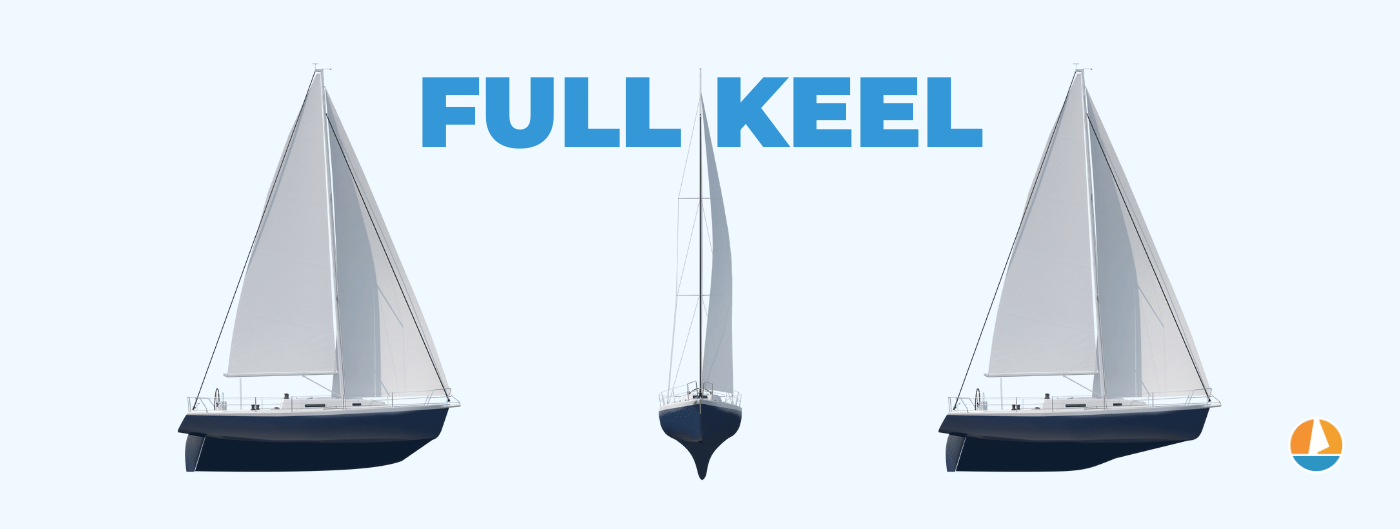
What is a full keel? A full keel runs from front to aft for at least 50% of the hull and is fully integrated into the hull. It has the largest wetted surface of any keel type, and it is also the heaviest. This results in directional stability and reduced heeling, providing the most comfortable ride, but also the slowest.
The wetted surface simply means the amount of water contact area. With such a large wetted surface, it decreases slippage to leeward the most of all keel types, while it counters heeling the most as well.
The full keel is the most comfortable and stable keel type available. However, comfort comes at a price. It delivers the worst performance due to this large wetted area. It is the slowest of the keel types, and it has the worst windward performance.
This makes full keels particularly great for longtime cruisers or liveaboards who prefer comfort over speed, but less ideal for daysailers who need to navigate in and out of slips regularly.
Since it runs for at least 50% of the hull, it doesn't need to run as deep as a fin keel, resulting in a more shoal draft.
Heavier keels result in increased displacement, so a full keel boat will need a larger sail area to compensate for its weight.
For a more detailed discussion on full keel advantages, I recommend reading William's excellent article 5 Surprising Advantages of a Full Keel Sailboat here.
Example sailboats with a full keel:
- Nicholson 22
- Island Packet 380
- Beneteau Oceanis 411 Clipper
- Beneteau First 50
- Jeanneau Sun Shine 38
- Dufour 455 Grand Large
There are a lot of great cruising boats with full keel designs , some of them considered classics.
Full Keel with skeg rudder
Full keels with a skeg rudder design have a protected rudder, thanks to putting a structural part of the keel directly in front of the rudder. This helps with fending off any hazards to the rudder, like floating pieces of rope, rocks, or garbage, and protects it in case of running aground. The skeg design ensures the rudder is nearly impossible to break off.
Fixed keel Good for cruising and liveaboards Faster than a regular full keel

What is a modified full keel? A modified full keel is a full keel with a cutout at the front, reducing the wetted surface slightly, which increases performance without sacrificing too much comfort and stability. After the full keel, it has the best directional stability and the least amount of heel.
The modified full keel is popular among (bluewater) cruisers, thanks to its increased handling and performance. Most modified full keels have a skeg rudder, ensuring it is well-protected.
The slightly reduced weight and wetted surface improve windward performance quite a lot, but it is still one of the most stable keel designs out there.
Example sailboats with a modified full keel:
- Hallberg-Rassy HR 40
- Dufour Arpege 30
- Beneteau Oceanis Clipper 281
- Jeanneau Sun Odyssey 37.2
Fixed keel Good for racing Fast
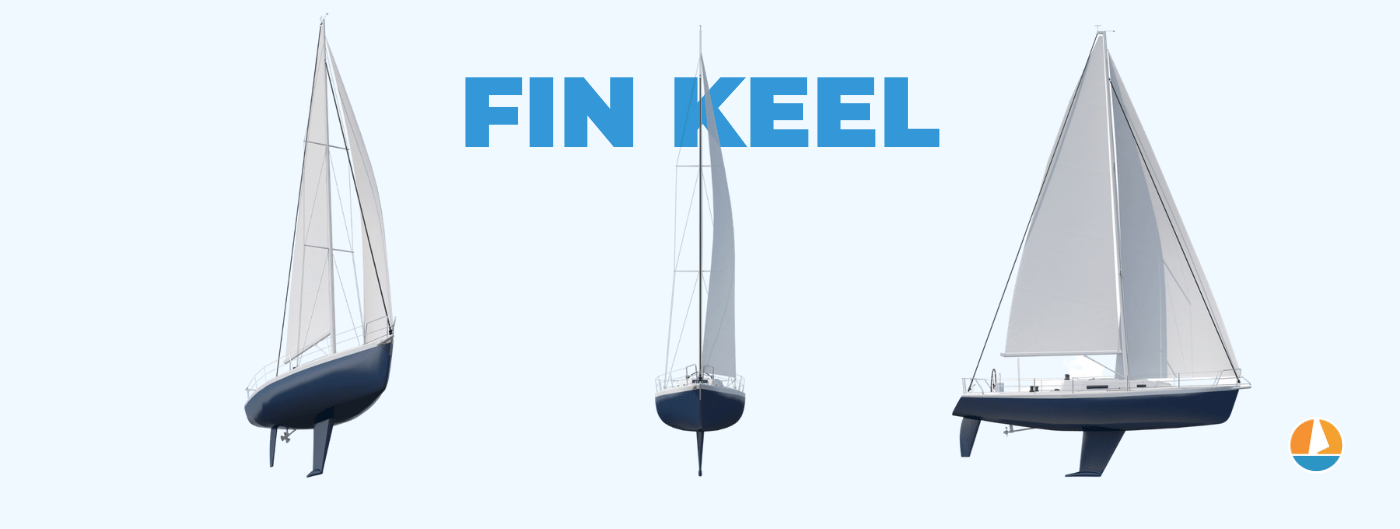
What is a fin keel? A fin keel is a long, weighted blade attached to the bottom of the hull. It is lighter, faster, and more maneuverable than a full keel, but also more vulnerable. The increased distance between ballast and sails provides a lever, reducing the need for a large wetted surface or additional ballast.
Fin keels are generally bolted onto the hull and run deeper and thinner than a full keel. They are also lighter. This helps increasing performance (a lot), making fin keels a lot faster in all situations.
There are some major disadvantages to fin keels, however. Fin keels are a lot less comfortable than full keels and allow for more heel and a less solid track, so less directional stability. Fin keels are also a lot more vulnerable than full keels. They can break off when running aground, or get damaged.
They are very popular among racers and perform better when maneuvering in tight spots, like getting in and out of slips.
Example sailboats with a fin keel:
- Catalina 30
- Jeanneau Sun Odyssey 36.2
Fin keel with skeg rudder
Fin keels with a skeg rudder use a small structural part in front of the rudder to protect it. This design is mostly integrated into the hull, making it less vulnerable, and a great compromise between speed and safety.
Fin keel with spade rudder
Fin keels with a spade rudder have a completely exposed rudder, and typically a fin that is simply bolted on. The keel isn't integrated into the hull, making it more vulnerable and less comfortable.
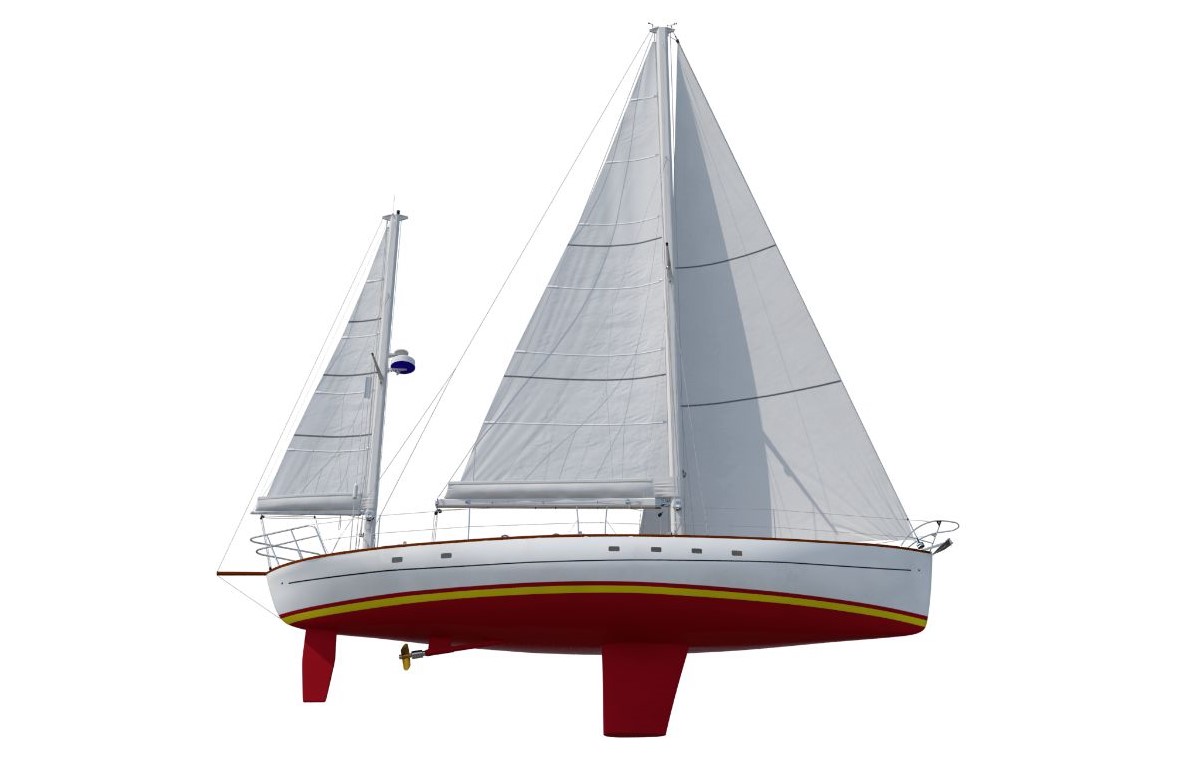
Fin keel variant Good for cruising Less crossflow
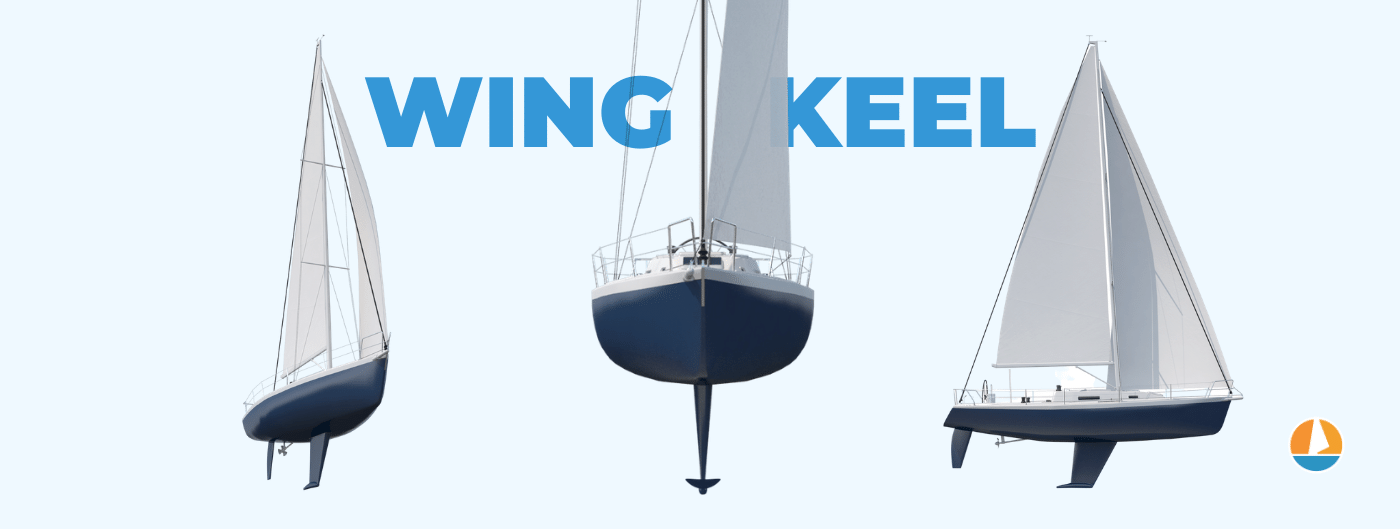
What is a wing keel? A wing keel is a fin keel with a horizontal foil at the tip, which is wing-shaped and generally weighted. Its shape reduces crossflow, improving directional stability, and its ballast decreases heel, resulting in a more comfortable ride. The addition of a wingtip allows for a shorter fin, reducing draft.
Wing keels are good for cruising since this design improves directional stability compared to a regular fin keel or a bulb keel.
We'll discuss the wing keel's advantages and disadvantages in more detail in this article.
Fin keel variant Good for cruising Stability
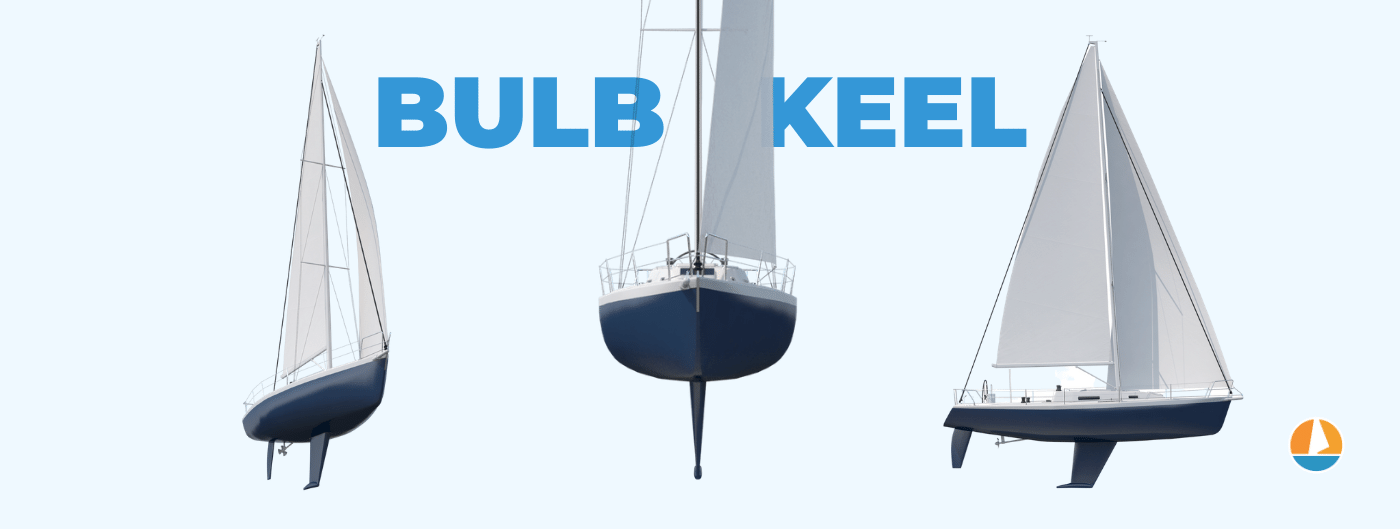
What is a bulb keel? A bulb keel is a high-aspect-ratio fin keel with additional ballast at the end, which generally has a bulb or teardrop shape. This ballast improves stability and utilizes the distance between force and counterforce as a lever. This design reduces the need for a deep fin, resulting in a shoal draft.
By placing the weight at the largest possible distance from the force on the sails, you need relatively little extra weight for the same reduction in heel, making bulb keels very effective for cruising.
This design reduces the wetted area while increasing the weight of the keel just slightly, which increases sailing comfort big time.
Example sailboats with a bulb keel:
- Bavaria B/One
- Beneteau First 24
Fixed keel Good for racing Can be beached

What is a bilge keel? A bilge keel is a twin keel which uses double fins, allowing the boat to be beached and rest on its keel upright. Bilge keels have double the wetted surface, which increases comfort and directional stability while decreasing heel. Modern bilge keels often provide decent windward performance, thanks to better design.
The bilge keel does sacrifice speed compared to the fin keel but doesn't necessarily offer worse performance overall. Older designs performed considerably worse than other keels and were especially slow.
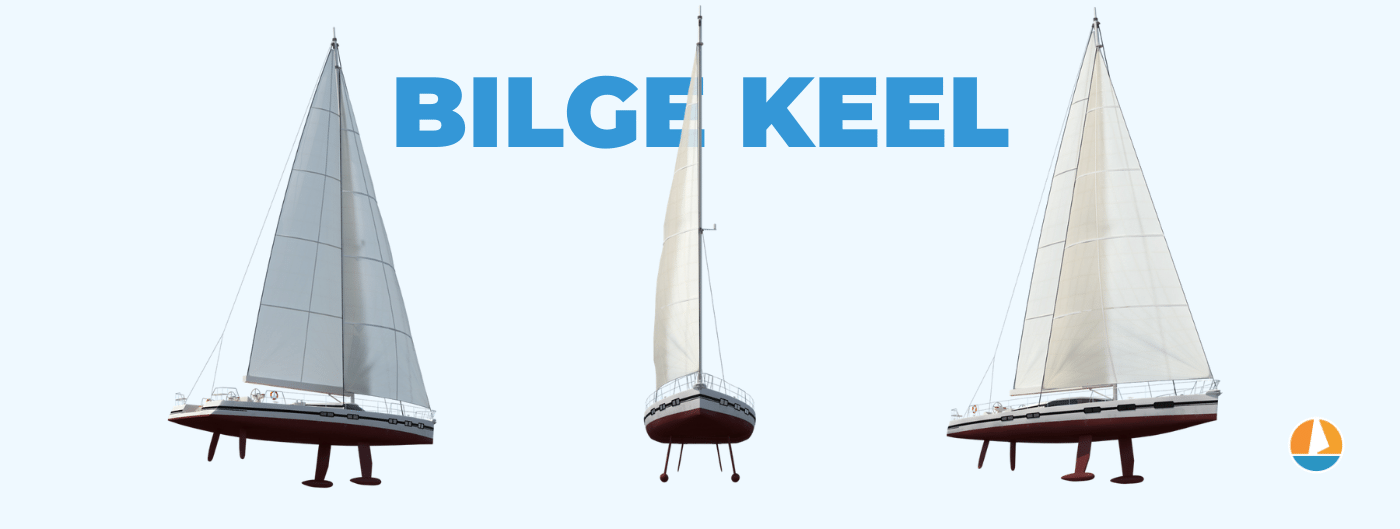
Bilge keels have some major advantages over full keels and fin keels. The most important is that the boat can be beached, making it a popular design in tidal waters. Bilge keels are especially common along the British coastline, where fishermen keep their boats in tidal harbors.
Another major advantage is that the boat can be stored resting on its keels, making dry storage and maintenance a lot easier.
Of course, there are many more pros and cons to the bilge keel , which we go into here.
Example sailboats with a bilge keel:
- Dufour Dynamique 62
- Hunter Duette
- Patagonia Patago 39
- Macwester 27
Lifting keel Good for daysailers Versatile

What is a centerboard? A centerboard is a type of retractable keel that rests on a hinge and can be lowered through a slot in the hull. It folds out like a pocket knife and allows you to increase or reduce the draft of the boat. Centerboards are mostly used on small fishing boats.
The centerboard is a very versatile keel type, allowing you to have both a very shoal draft for inland waters, as well as steadying the boat and reducing heel for larger bodies of water, or even oceans.
I've sailed a Cornish Crabber with a centerboard for a week, and while we stayed inland, having the option to increase the keel depth really came in handy when crossing the IJsselmeer (a former sea in The Netherlands).
There's more to the center
Olaf Roethele
https://www.theyachtmarket.com/en/new-boats/cornish-crabbers/adventure-17/218/
My name is Olaf and I am the owner of a Cornish Crabber 17 Adventure boat.
I would like to ask you if you can imagine to install on this boat a Torqeedo 2.0 Pod motor? Therefore i guess a modification of the keel/skeg is necessary ?!
Best regards from Uruguay,
You completely missed the hybrid planing/water-ballast keel of the Macgregor range
Thanks a lot for this explanation
Roger Bannon
Very well written article which provides an excellent guide for us small wooden boat builders. Thanks.
Leave a comment

IMAGES
VIDEO
COMMENTS
Klar for båtsesongen? På FINN kan du kjøpe, selge, og leie ut båt, båtplasser og kjøpe båtmotorer og deler. Askeladden, Uttern, Yamarin er blant de mest populære merkene. Enten du vil ha en RIB, cabincruiser eller snekke finner du både nye og brukte båter på FINN.no
Du finner 37 annonser i kategorien Yacht under Båter til salgs på FINN Båt. Søk og sammenlikn pris blant alle typer båter i hele Norge!
Du finner 9070 annonser Båter til salgs på FINN Båt. Søk og sammenlikn pris blant alle typer båter i hele Norge!
The official launch has been scheduled for the Antigua Charter Yacht Show in December 2024, in what the brokerage agency calls the most "poetic" twist in the recent saga. It will cruise the Med ...
Vector fins generate significant lift at speed which improves speed and fuel economy over straight fins, when a boat goes into a turn, a gyro or straight-fin system will try to keep it level, while the Vector fin system recognizes the difference between a roll and a turn, and banks the boat into the turn to resist the centrifugal force generated.
Quantum Marine Stabilization's Dyna Foil at 90 degrees and pocketed. Stabilizing a yacht while it is stopped in a seaway or at anchor requires a different type of fin motion than while the vessel is underway and water is flowing over the fins. This motion has been described as "swinging" or "paddling.".
Building of Finn dinghies in 1952. The Finn dinghy is a single-handed, cat-rigged sailboat, and a former Olympic class for men's sailing.Since its debut at the 1952 Summer Olympics in Helsinki, the Finn featured in every summer Olympics until 2020, making it the longest serving dinghy in the Olympic Regatta and one of the most prolific Olympic sailboats,. [3]
Chris explains the Pros and Cons of the two type of stabilizers used on boats and yachts. Stabilizers DRAMATICALLY reduce side-to-side roll on a boat, improv...
Sailing a single person boat is very simple: show up at the club, throw on your hikers, toss the boat cover, roll the Finn down the ramp, and you are sailing in 5 minutes! No excuses, no one to ...
What stabilizers do, is reduce roll movement of a vessel, but not very much of the pitch, sway, yaw, or massive movements you get on a vessel in waves. Luckily, in most situations, the roll is by far the most dominant and most uncomfortable motion, so reducing roll by a good percentage will make a substantial difference in comfort and safety on ...
Waveless STAB is the new generation of electric fin stabilizers: fast, ultra compact, low noise, low power absorption, top quality. For yacht starting from 12 m (40 ft) LOA up to 35 m (115 ft). Prices starting from 43.000 eur. Enquiry here or with any representative in our Service Network.
Which boat motions can gyros and fin stabilizers counteract? No stabilizer system will counteract some of these motions, particularly heave and to an extent, pitch. But Vector Fins in particular can make a big difference in yaw, roll and sway, which is good, since those last two are the two motions most likely to cause seasickness. Because ...
This beautiful artificial plant comes in in the form of a boat resting on a bed of coral, and will add greatly to your aquarium's aesthetic. Only at PetSmart. Features: Boat and Coral Design Includes: 1 Ornament Intended Pet(s): Fish Color: Multiple Colors Product Dimensions: 5.25 in x 6.25 in
La Asamblea General adopta una resolución que exige a Israel el fin de la ocupación en los territorios palestinos. La ONU alerta del riesgo de escalada en Líbano y pide que los responsables de las explosiones rindan cuentas. "No podemos crear el futuro para nuestros nietos con los sistemas de nuestros abuelos", dice Guterres . El calentamiento global será de hasta 3 °C.
In the last weeks of 2023 and early 2024, the pace of boat arrivals and the number of individuals disembarking in Indonesia rapidly increased. From mid-November 2023 to date, 15 boats carrying ...
Performance-oriented sailors and race-boat designers quickly latched on to hull shapes marked by deep-draft, foil-shaped, high-aspect ratio fin keels. From the late 60s to whats currently glowing on CAD screens in designer offices around the world, keels have grown deeper and shorter in chord length, and bulb or anvil-like tips have grown more ...
Here are 13 good full keel sailboats that are worth considering: Nicholson 32. Island Packet 380. Folkboat 25. Cape Dory 36. Vancouver 32. Freya 39. Wylo 2. Tradewind 33.
The full keel is the oldest style of keel, used since the earliest sailboats. A full keel is integral to the hull and runs the entire length of the under-body of the boat. The rudder is hung at the end of the keel if it's not transom mounted. Most "full keel" boats from recent decades are modifications of the centuries-old full keel.
Finn dinghy: Farewell to Olympics. It has been a part of sailing in the Olympics since 1952, but this summer, when the Finn dinghy fleet takes to the waters of Enoshima it will be its final ...
The Finn won the design contest in 1947 for a new singlehanded boat for the 1952 Olympics. It has the distinction of being The Olympic singlehanded class ever since. That is sixty-four years of serious, hard sailing. It has progressed from wooden hulls and masts to glass boats and carbon masts.
Check out our website: https://www.explorers.phEmail: [email protected] chat: https://www.facebook.com/FinnSnowVlog📱Follow SocialMy Instagra...
A fin keel and spade rudder configuration gives high pointing but can be sensitive on the helm Credit: Graham Snook/YM TAGS: Keel type Practical seamanship sailing skills. How keel type affects performance. ... The performance and handling of a yacht depends on many things, but perhaps the most important single feature is the shape of the hull ...
5) Bilge Keels. These double bilge keel makes a boat stay upright in case of a dried out low tide. This design results in a shallower draught as compared to fin keels. This feature makes it appropriate for sailing in shallow waters along the coastlines.
A boat with a BN of 1.6 or greater is a boat that will be reefed often in offshore cruising. Derek Harvey, "Multihulls for Cruising and Racing", International Marine, Camden, Maine, 1991, states that a BN of 1 is generally accepted as the dividing line between so-called slow and fast multihulls.
World Sailing - Finn. A physically demanding single handed dinghy, and the oldest current Olympic class, the Finn is seen as one of the most challenging but rewarding boats to sail.
A physically demanding single handed dinghy, and the oldest current Olympic class, the Finn is seen as one of the most challenging but rewarding boats to sail. Global Partners Anti-Doping. Participation & Development. Athlete Profiles. Rankings. Categorisation. Find an Official. Get the Racing Rules App.
The most common sailboat keel types are full-length keels, fin keels, bulb keels, wing keels, bilge keels, and lifting keels. Full keels are popular among cruisers, while fin keels are generally used for racing. Bilge keels and lifting keels are typically used in tidal waters, on small fishing boats for example.